
Arnold Barn


Arnold Barn
About Us Page 5
YC Leadership & Development Program Schedule
Pages 6 - 9 of Events
Joint Annual Meeting Schedule of Events
Hotel and Convention Center Map
Speaker Information
About the YC Advisory Council
Meet the 2023 YC Advisory Council
Finding Fairness in Farm Transition Supplement
Pages 9 - 11
Pages 12 - 13
Pages 14 - 15
Pages 16 - 17
Pages 18 - 19
Pages 20 - 76
Pages 77 - 79 Pricing Supplement
A Primer on Your Milk Check and Federal Order
An Update on NMPF’s Federal Order
Pages 80 - 87 Modernization Efforts Supplement
Note Paper
Pages 88 - 92
Steamboar Springs, Colorado
Windsor Farm Dairy
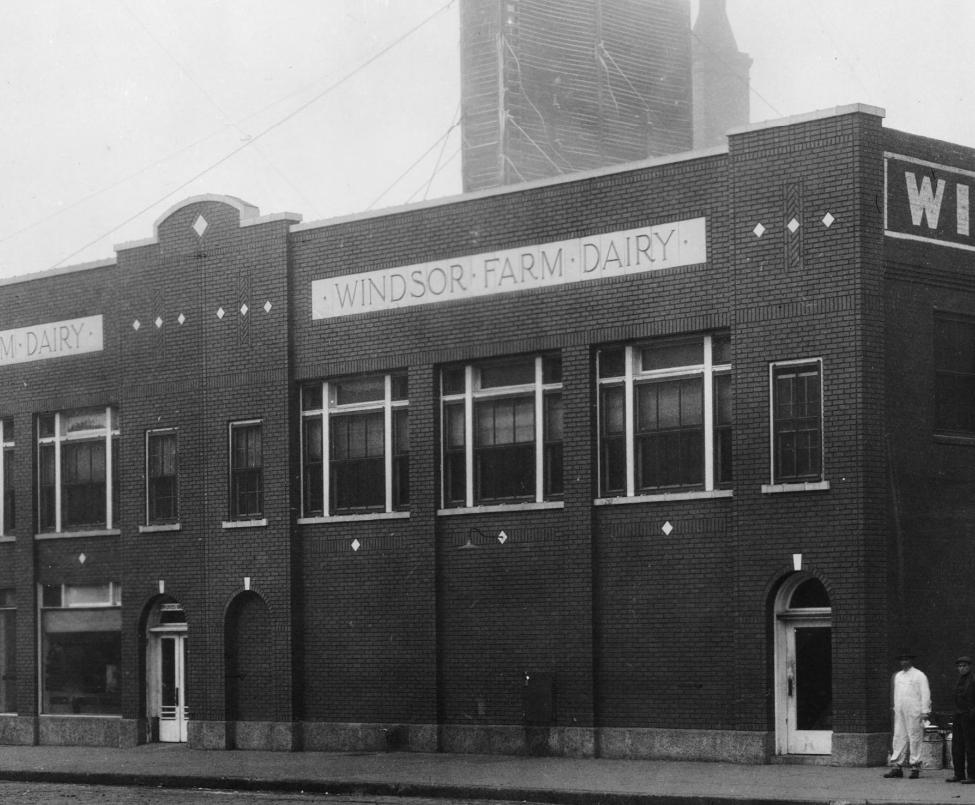
Denver, Colorado



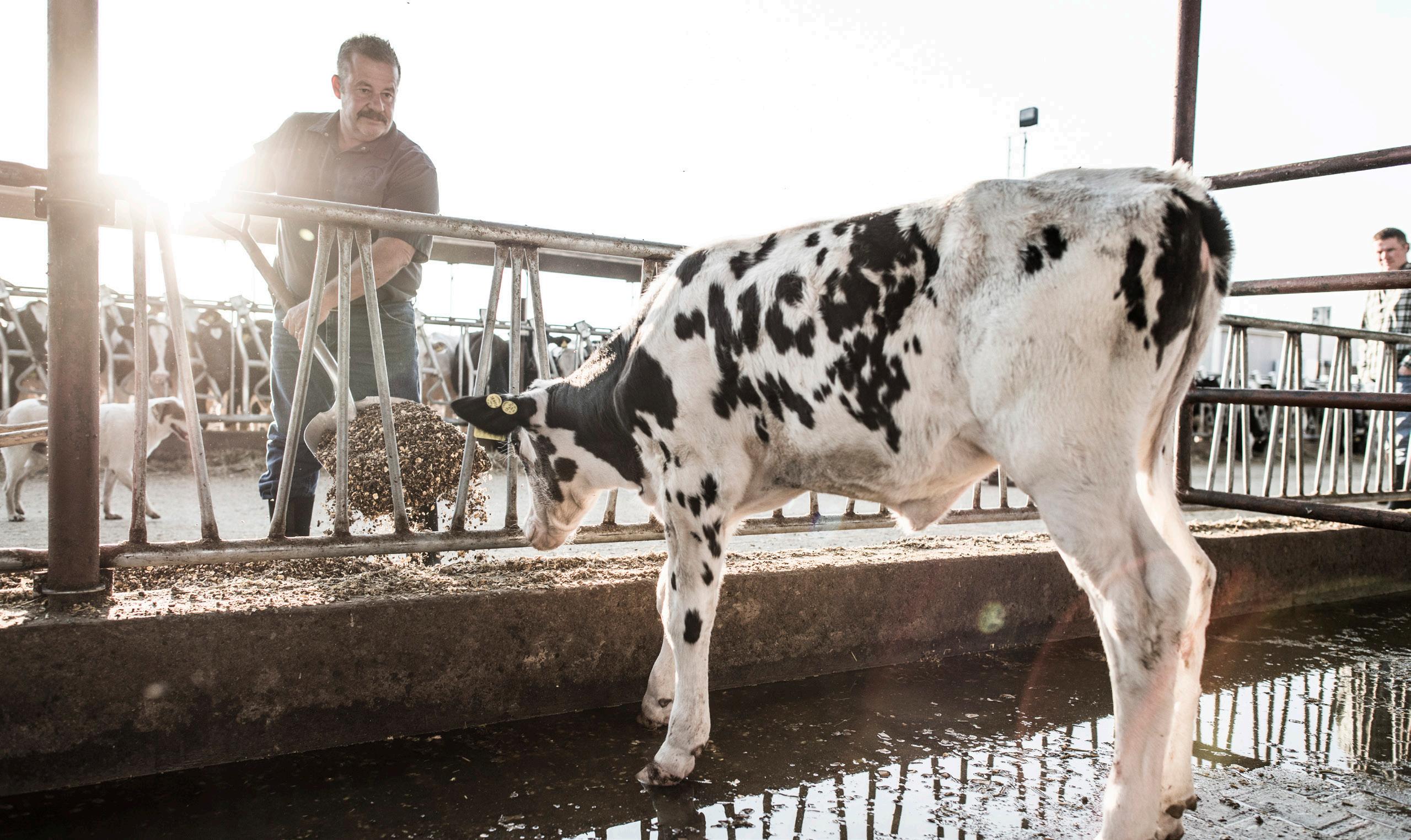
supports rural
and
today
to Colorado Welcome
Welcome to the National Young Cooperators (YC) Program’s annual Leadership & Development Program! We know it’s never easy to step away from the farm, so thank you for your time and attention over the next few days as we tackle some important topics.
Managed by the National Milk Producers Federation (NMPF), the National YC Program has provided training and leadership development opportunities to beginning dairy farmers for over 70 years. The program aims to provide producers with the education, tools and resources they need to improve their profitability and resilience through year-round virtual and in-person programming.
Established in 1916 and based in Arlington, Virginia, NMPF carries out policies that advance the well-being of dairy farmers and their cooperatives. The members of NMPF’s cooperatives produce the majority of the U.S. milk supply, making NMPF the voice of dairy farmers on federal policy issues. The National YC Program is managed by NMPF and funded by its members and support from stakeholders including Farm Credit and Phibro Animal Health.
This event kicks off a new program year for the National YC Program. In addition to this two-day program, the National YC Program hosts monthly webinars and two other in-person events throughout the year:
- YC Dairy Policy & Legislative Forum
June 5 - 6, 2023 Arlington, Virginia
- YCs at World Dairy Expo
October 5, 2023 Madison, Wisconsin
8:00 – 9:00 AM Breakfast
Cottonwood 8-9
With remarks from Val Lavigne, Unc Brock Farm
9:00 – 9:15 AM Welcome
Willow Lake 3-5 Jim Mulhern, NMPF
9:15 – 10:00 AM
Leadership Lesson with Marilyn Hershey
Willow Lake 3-5 Marilyn Hershey, Ar-Joy Farms
Pennsylvania dairy farmer Marilyn Hershey will share important leadership lessons that she’s gained from her roles as a business owner and chairperson of Dairy Management, Inc.
10:00 – 10:30 AM Break
Willow Lake 3-5
10:30 – 12:00 PM
Dairy Cooperatives and the Future: Adapting in a Changing World Panel
Willow Lake 3-5
Facilitated by Alan Bjerga, NMPF
Panelists include Steve Schlangen, Schlangen Dairy; Val Lavigne, Unc Brock Farm; Andy Mason, Fawnwood Farm
Tune in as industry leaders discuss the challenges and opportunities dairy cooperatives face now and in the future, why farmer-leadership is critical to cooperatives’ continuation and success, and how YCs can get and stay involved in cooperative governance.
12:00 – 1:00 PM Lunch
Adams Terrace - Outside (Weather Permitting)
1:00 – 4:00 PM
Willow Lake 3-5
Elaine Froese, Family Farm Transition Expert
Fairness keeps founders awake at night. Fairness means different things to different farm team members and the non-farming heirs. Elaine will tackle the challenges most families face when trying to be FAIR during the farm transition.
YCs will receive the FAIR (Financial transparency, Attitudes, Intentions, Rebels) model:
- Understand the need to unpack financial transparency and the tools to do it (income streams, debt servicing, viability of the farm)
- Navigate attitudes towards money by encouraging families to have clarifying conversations about inheritance expectations
- Share an easy-to-use framework that will enable farm families to create clear intentions about how important decisions are made - Get insights on what to do with the rebels who are never satisfied as founders shift roles
A farm is not a piece of pie. In today’s agricultural reality, farm families cannot make all of their children economically equal. Equality is no longer part of the transition language. Elaine’s presentation will give you a new language to manage expectations and navigate finding fairness in farm transition so that everyone will be successful.
Willow Lake 3-5
Elaine Froese, Family Farm Transition Expert
Are you looking for courage and tools to talk to your parents or other farm team members? Do you need to know how to get unstuck with your communication?
Need some practical tips and insights for change?
Book 15 minutes for a private coaching session with Farm Family Coach Elaine Froese. She will listen, guide and empower you to create the next steps for better clarity of expectations, and certainty of timelines for your role on the farm. She has written 4 books and coached over 600 families, so she has seen a lot of scenarios.
5:30 – 10:00 PM Evening Activities
Grizzly Rose Saloon - Bus pick-up and drop-off at the Aurora Veranda Convention Center Entrance
Join us for drinks, dinner, live music and a line dancing lesson at the iconic Grizzly Rose Saloon in Denver. The Grizzly Rose Saloon opened in 1989 and is known as one of the “last great honky tonks in the world.” The venue is known worldwide for hosting some of the best country music in Denver and across the nation.
8:00 – 9:00 AM Breakfast
Cottonwood 6-7
Willow Lake 3-5
Ken Bailey, Ken Bailey Dairy Consulting
Milk pricing is complex, making it a challenge to understand your milk check. This session provides an overview. The first part will focus on commodity prices, and the second will focus on Federal Order prices and market-wide pooling. The session will end with a discussion of your milk check.
10:30 – 11:00 AM Break
Willow Lake 3-5
11:00 – 12:00 PM Dairy Market Outlook
Willow Lake 3-5
Tanner Ehmke, CoBank
The U.S. dairy industry, from producers to processors, has a bright outlook in the years ahead with growing export demand for a diversity of dairy products, reduced export competition from New Zealand and Europe, and continually resilient domestic demand. High costs of feed, labor, and transportation, though, limit the U.S.’s ability to fully capture the market potential. A future of rising production costs into 2023 limits upside growth in milk production for 2023.
12:00 – 1:00 PM Lunch
Cottonwood 6-7
1:00 – 2:30 PM Mr. Spock, Mr. Miyagi and You: A Guide to Risk Management
Willow Lake 3-5
Christine Brodeur, Dairy Farmers of America and Adam Cardwell, Land O’Lakes, Inc.
Panelists include Matt Hoff, Coldsprings Farm; Justin Leyendekker, Hoppy Cows Dairy; Brian Esplin, Diamond 3 Dairy
Learn how to live long and prosper, emphasis on the prosper side, by utilizing the many tools available to you in risk management. Adam and Christine will provide perspectives for how your business can implement an effective strategy that provides long-term milk and feed price protection. They’ll make the case for using the programs, teach you the terms you need to know, and spend some time reviewing the details for a variety of strategies. This session will also feature insights from a panel of dairy farmers who will join in a discussion of how these programs work on their individual operations.
2:30 – 3:00 PM Break
Willow Lake 3-5
3:00 – 4:00 PM
Willow Lake 3-5
Peter Vitaliano and Stephen Cain, NMPF
The Federal Milk Marketing Order program is one of the key pillars of the U.S. milk pricing system. It provides for the orderly marketing of milk for fluid use and thereby provides the same service for milk marketed in all uses. The system depends on establishing a value for milk in those various uses each month, which, for much of the system’s history, was done by simply surveying what a large group of small dairy manufacturing plants in the Upper Midwest paid for milk. This method was discontinued and replaced in 2000 by a more complex system of product price formulas, which translated market prices of several basic dairy products into milk values. To operate correctly in both dairy farmers’ and dairy cooperatives’ interests, these price formulas need to be kept current to reflect changes in the evolving U.S. dairy industry. But many of their factors have not been updated since they were first implemented twenty-two years ago. A team of milk marketing experts from NMPF’s member cooperatives all across the country has been working hard this year to develop a comprehensive set of badly needed updates to modernize the system. This program provides an overview of this effort and why it’s important for America’s dairy farmers.
4:00 – 6:00 PM Break
6:00 – 7:30 PM
Welcome to Colorado Reception
Aurora B-D
8:00 – 8:20 AM Welcome Remarks and Introduction
Adams A
Neil Hoff, UDIA Chair
8:20 – 9:35 AM Leadership Keynotes and NMPF Town Hall
Adams A
Randy Mooney and Jim Mulhern, NMPF
Keynote remarks from farmer and executive leadership of NMPF, followed by the NMPF Town Hall.
9:35 - 10:20 PM
Dairy Bar Break
Adams B-D
10:20 - 11:25 AM
NMPF Town Hall, Cont’d
Adams A
11:25 – 12:00 PM
Adams A
John Crawford, IRI
IRI’s John Crawford will review economic trends from a consumer lens and their impact on shopping behaviors across the store.
12:00 – 1:15 PM Lunch
Willow Lake 3-5
1:30 – 2:00 PM
Adams A
Barb O’Brien and Marilyn Hershey, DMI
Keynote remarks from farmer and executive leadership of DMI
2:00 – 2:45 PM Your Dairy Checkoff Podcast: The Sustainability Opportunity for Dairy
Adams A
Jill Houin, Homestead Dairy; Mark Benson, Leprino; Jamie Jonker, NMPF; Sara Dorland, Ceres
Join us for a live production of the Your Dairy Checkoff podcast featuring a candid conversation on dairy and environmental sustainability hosted by Jill Houin of Indiana’s Homestead Dairy. Featuring voices from dairy farmers, industry leaders, customers and more, we’ll answer questions head-on and address how farms of all types and sizes can be economically successful while implementing environmental solutions.
2:45 - 3:30 PM Dairy Bar Break
Adams B-D
3:30 – 5:00 PM
Sales: Domestic & Global Opportunities for Dairy Adams A
Paul Ziemnisky, DMI; Michelle McBride, GoodSport; Taylor Montgomery, Taco Bell
The most important job of checkoff is to drive demand for dairy. We’ll share updates on partnerships, innovation and growth platforms that drive new domestic sales for dairy.
Krysta Harden, U.S. Dairy Export Council; Rodrigo Fernandez, U.S. Dairy Export Council; Shawna Morris, NMPF; Nina Bakht Halal, U.S. Dairy Export Council; Art D’Elia, Domino’s
We’ll also take a closer look at building demand for U.S. dairy and dairy products globally, examining both an established market (Mexico) and a developing market (Middle East) to better understand dairy’s challenges and opportunities on the world stage.
6:00 - 7:30 PM Cheese Reception
Adams B-D
8:00 – 9:45 AM
Adams A
Anne Warden, DMI; Katie Brown, National Dairy Council; Taylor Wallace, George Mason University; Yolanda Lawson, National Medical Association; Donna Martin, Burke County, GA; Claudia Larson, NMPF; Aaron Scott, United Dairy Industry of Michigan ; Toby Amidor, Toby Amidor Nutrition
We’ll hear an array of perspectives on how we’re connecting checkoff’s science to consumer-trusted dairy champions, and helping a new generation believe in the power of dairy’s sustainably produced nutrition.
9:45 - 10:30 PM Dairy Bar Break
Adams B-D
10:30 – 11:15 AM
Adams A
Widely respected on both sides of the aisle for his accurate and impartial political insight and regarded by NBC’s Chuck Todd as “pretty much the only person you need to follow on Election Night,” David Wasserman will break down the upcoming 2022 election and what it might mean for dairy farmers.
11:15 – 11:45 AM
Adams A
Jim Mulhern, NMPF; Barb O’Brien, DMI; Alex Peterson, NDB
1:00 – 8:00 PM Farm Tour and Dinner (Pre-Registration Required)
Quail Ridge Dairy - Bus pick-up and drop-off at the Aurora Veranda Convention Center Entrance Join conference attendees for an optional tour of Kraft family’s Quail Ridge Dairy in Fort Morgan, Colorado.




























Val is a dairy farmer in Schaghticoke, New York, where she and her family raise 200 dairy cows, 100 feeder steers, 50 goats and 1,000 turkeys. Unc Brock Inc. also owns two food trucks and a catering business. Val enjoys promoting dairy online and is part of NMPF’s Dairy Voice Network, an AgriMark YC officer, and a Dairy Engaged Influencer with her regional checkoff program.
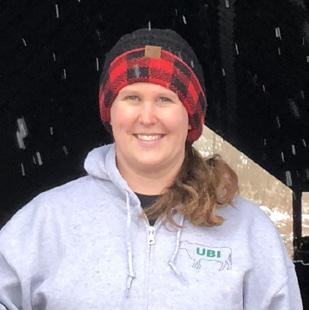
Jim is a veteran agriculture and food policy strategist with over 35 years of experience working with Washington, DC policymakers and the media. Since taking over leadership of NMPF in January 2014, Jim has directed the dairy organization’s work on a wide range of important issues including trade policy, immigration reform, the farm bill, environmental policy, and more.
Marilyn Hershey - Owner, Ar-Joy Farms; Chairperson, DMI
Marilyn and her husband, Duane, own and operate Ar-Joy Farms, LLC, a Pennsylvania family farm nestled about an hour west of Philadelphia and 40 minutes north of the Chesapeake Bay. Their long family history of dairy farming is evident as they care for the land, the animals and their employees. Environmental stewardship is also a top priority for the Hersheys.

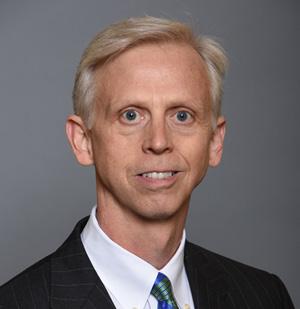
Since October 2018, Alan has led NMPF’s communications efforts, focusing on media relations, marketing and digital storytelling. He previously worked at Bloomberg News as its lead writer on national farm policy issues, covering topics including the Farm Bill, agricultural trade and rural economics. Bjerga is a past president of the National Press Club in Washington, D.C.

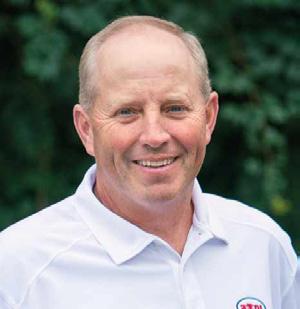
Steve is a member of the NMPF Board of Directors and chairman of Associated Milk Producers Inc. Schlangen Dairy implements numerous environmentally friendly practices on their 60-cow, 200acre farm in central Minnesota. The farm incorporates over 30 conservation practices, providing a blueprint for beginning farmers and generational farms to follow.
Andy is a member of the NMPF Board of Directors and a farmer-owner of Land O’Lakes, Inc. Together with his family, Andy operates Fawnwood Farm in Chestertown, Maryland where they farm 4,500 acres and milk 550 cows. Andy’s parents, Tom and Alice, originally started the farm nearly 50 years ago on a 150-acre rented farm.
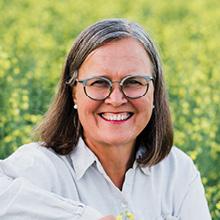
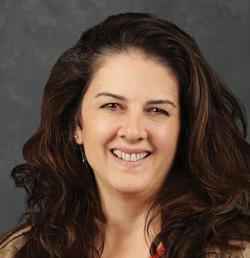
Elaine Froese, CSP is a certified professional speaker, certified coach, and author. She’s a go-to expert for farm families who want better communication and conflict resolution to secure a successful farm transition. As a farmer and mother to the successor of their farm, she understands the culture of agriculture intimately.
Ken has devoted his entire career to the economics of the U.S. and global dairy industries. Ken re ceived a Ph.D. in applied economics from the University of Minnesota. He started his career in eco nomics while working at a policy think tank at the University of Missouri. It was there that he wrote his first textbook on the economics of milk marketing and testified before Congress.

Tanner is a Lead Economist for Dairy Production and Processing at CoBank’s Knowledge Exchange research team. Prior to joining CoBank in 2015, Tanner farmed and marketed seed for his family’s seed company in western Kansas where his family homesteaded in 1885. He previously was a commodities analyst at AgResource Company in Chicago.

Christine serves as senior director for Dairy Farmers of America (DFA) Risk Management, a division of DFA. She began her career with the Cooperative in 2008 as a communications specialist. In 2011, she transitioned to DFA Risk Management to assist in providing members with information to better understand forward contracting opportunities available to them.
Adam Cardwell - Senior Risk Manager, Land O’Lakes, Inc.
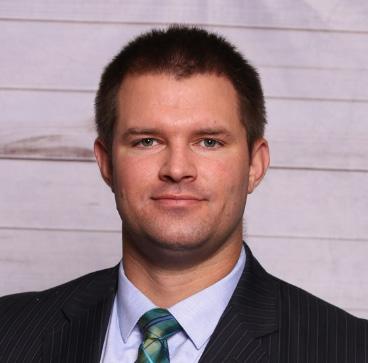
Adam has been trading and managing commodity risk for 13 years. Currently, he is developing and implementing risk strategies for physical procurement and derivative energy trading for natural gas, heating oil, propane, and retail electricity. He also manages commodity risk for the Purina and Winfield divisions on corn, soybeans, soybean meal and wheat.
Matt owns and operates Coldsprings Farm in New Windsor, Maryland and is a board member of Maryland & Virginia Milk Producers Cooperative Association. The Hoff family raises more than 1,000 registered Holstein cows and farms 2,200 acres. Matt has worked all parts of the dairy, learning to do all kinds of jobs since he started when he was 10 years old.
Justin is a third-generation dairy farmer and the owner of Hoppy Cows Dairy in Kingsburg, California. Since 2019, he has also served as a board member for the National Dairy Research and Promotion Board. Prior to dairy ownership, Justin had a career in information technology management for four years before realizing his passion is in agriculture.


Brian is a fourth-generation dairy farmer in Shelley, Idaho. He grew up on his family’s potato, grain, hay and dairy farm and shortly after getting married, took over management of the dairy. In 1995, Brian bought the dairy from his parents and in 2009 built a new barn and expanded the herd to 1,450 cows. The farm raises all their heifers and some steer calves.
Peter is responsible for implementing, conducting and communicating all economic analysis supporting the NMPF’s programs relating to domestic and international dairy policy. Peter has extensive experience with, and knowledge of U.S. dairy markets and domestic and international agricultural and trade policy.

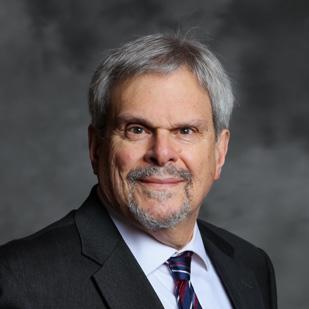


Stephen supports NMPF through analysis of domestic dairy production and global trade in dairy products. Prior to joining NMPF, he worked as an agribusiness consultant with IHS Markit where he covered a number of commodities and specialized in economic impact analysis. Stephen jointly supports NMPF and the U.S. Dairy Export Council.
We know a healthy herd is a productive one. Our comprehensive portfolio of dairy offerings includes proven and effective solutions that help you address important challenges and optimize the opportunity to support the health and productivity of your cows.
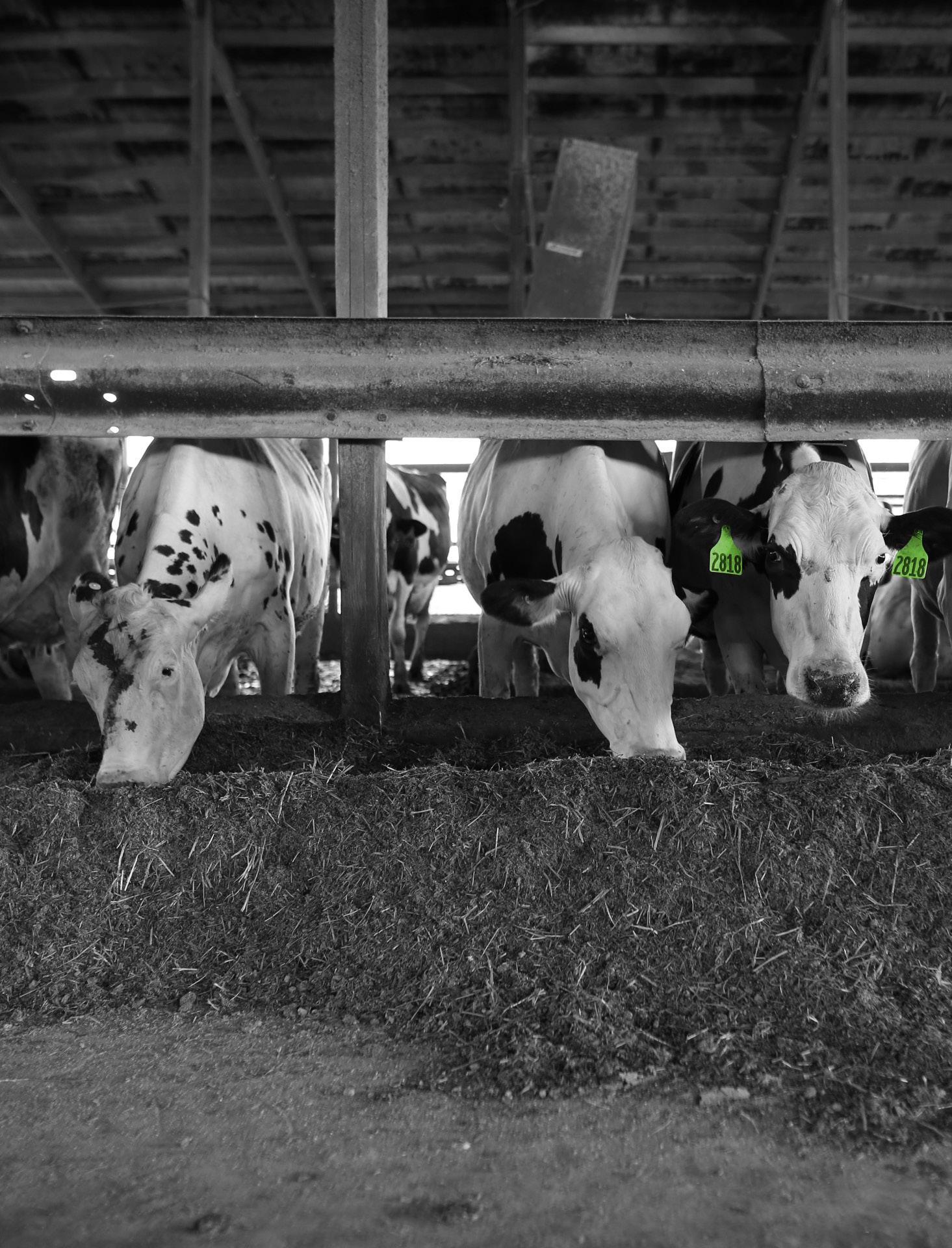
Val Lavigne Chairperson
Agri-Mark
Schaghticoke, New York
Dustin & Elizabeth Brunn Vice Chair Dairy Farmers of America Horicon, Wisconsin
Sid & Kristin Huls Prairie Farms Carthage, Illinois
Jaime Mowry & Matt Harrington
Upstate Niagara Cooperative, Inc. Le Roy, New York
Kip & Rochelle Siegler Michigan Milk Producers Association Imlay City, Michigan
Ben Smith
Maryland & Virginia Milk Producers Co-op Remington, Virginia
Talk With a Phibro Expert 800.677.4623 | pahc.com
Jason & Tiffany Staehely Northwest Dairy Association Oregon City, Oregon Brittany Thurlow Southeast Milk Inc. Zolfo Springs, Florida
The Young Cooperators (YC) Advisory Council helps guide the National YC Program toward its stated mission by providing key information and making recommendations on topics and activities of interest to YCs. The Advisory Council is responsible for providing topic and speaker recommendations for the YC Leadership and Development Program, the program’s monthly webinars and for the YC Dairy Policy and Legislative Forum.
What are the eligibility requirements to serve as a YC Advisory Council member?
Each NMPF member cooperative is eligible to have at least one seat on NMPF’s YC Advisory Council. To be eligible for participation, the Advisory Council member must meet the following criteria: - Nomination by NMPF member cooperative; - Employment on and/or ownership of a dairy farm that is a member of one of NMPF’s member cooperatives; and - Approval from member cooperative.
What is required of a YC Advisory Council member?
YC Advisory Council members are nominated by their cooperative to serve a one-year term. The 2022-2023 YC Advisory Council term will begin at the YC Leadership and Development Program in Oct. 2022 and end in Sept. 2023. Expectations for YC Advisory Council members include:
- Participation at two 90-minute virtual planning meetings
- Attendance at two or more in-person events
- Engagement at virtual Advisory Council leadership bootcamp
- Participation in at least three of the National YC Program’s monthly webinars
- Writing thank-you notes to program sponsors
Members of the advisory council also elect a chairperson and vice chairperson to lead the group. The chairperson will represent the National YC Program at events and meetings throughout the year, and report program updates to the NMPF Board of Directors. The vice chairperson is invited to attend NMPF Board of Directors dinners alongside the chairperson and will fill in as needed for the chairperson at meetings and events.
Contact your co-op’s YC coordinator to learn more!
Nate is a dairy farmer in Addy, Washington where he and his family milk 140 Holstein and Jersey cows, farm 1,300 acres, run 140 cow/calf pairs and manage a 400-head feed lot. When he’s not busy at Carlson Farms, Nate is a member of his local school board, where he has served for 15 years, and is active in Northwest Dairy Association’s YC Program.
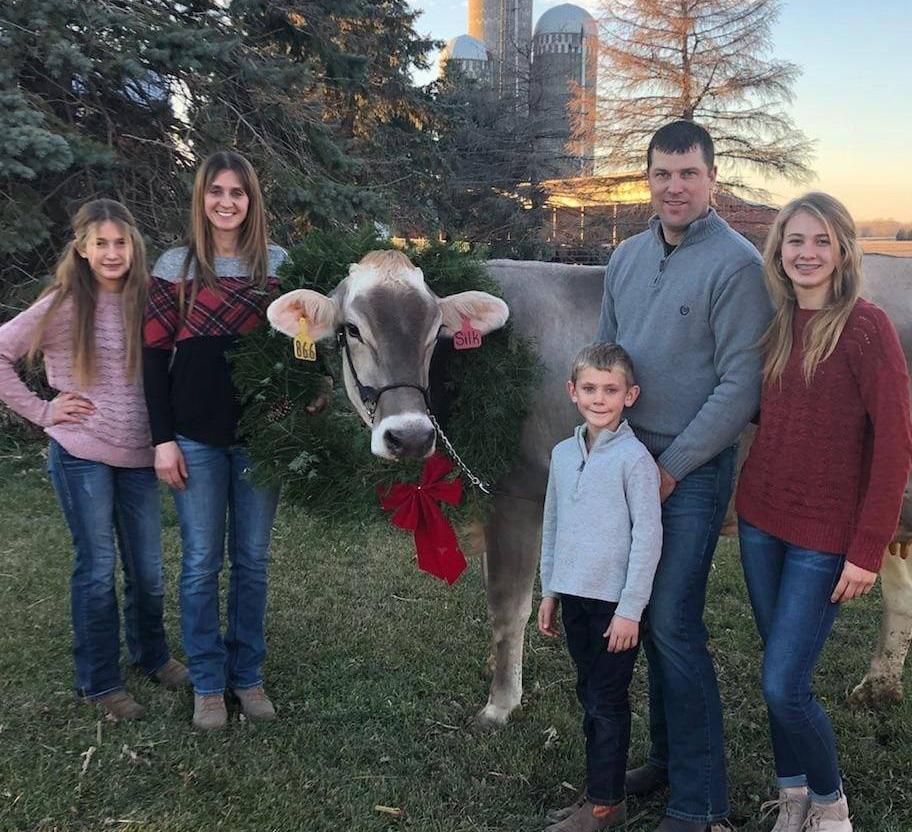
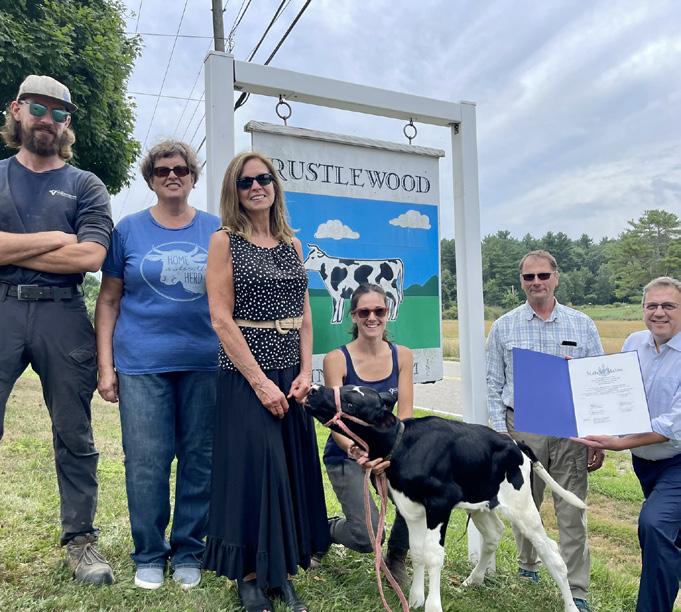

Upstate Niagara Cooperative, Inc.
Rachel manages Willow Bend Farm, LLC in Penn Yan, New York. The farm is home to 5,200 cows and 4,800 young stock across three sites in the Finger Lakes. Willow Bend also manages 9,000 acres of crops. Rachel has been involved with a number of dairy leadership programs including the Young Dairy Leaders Institute and Dairy Girl Network.

Isabel Mullin is a dairy farmer in the coastal town of Kittery, Maine, where she milks 80 cows in a tie-stall facility, raises 80 heifers and farms 300 acres. Through her involvement in the National YC Program, Isabel hopes to “learn as much about the industry as possible” in order to “contribute to it in the long run.” She is a member-owner of Agri-Mark, Inc.
Carl and Heather milk 130 cows and farm 400 acres at Sunny Side Dairy in Mayer, Minnesota. They both serve in several leadership positions including roles within the Minnesota Milk Producers Association, Farm Bureau, DHIA and First District Association. The pair recently started their own cheese company called Sunny Side Creamery.
Katelyn works alongside four business partners on Horning Farms LLC, a multi-generational dairy in Manchester, Michigan. The farm milks 400 cows and farms 1,000 acres. Katelyn is the dairy superintendent for her county’s 4-H Youth Show and coaches the local 4-H Dairy quiz bowl, judging, and skillathon teams.
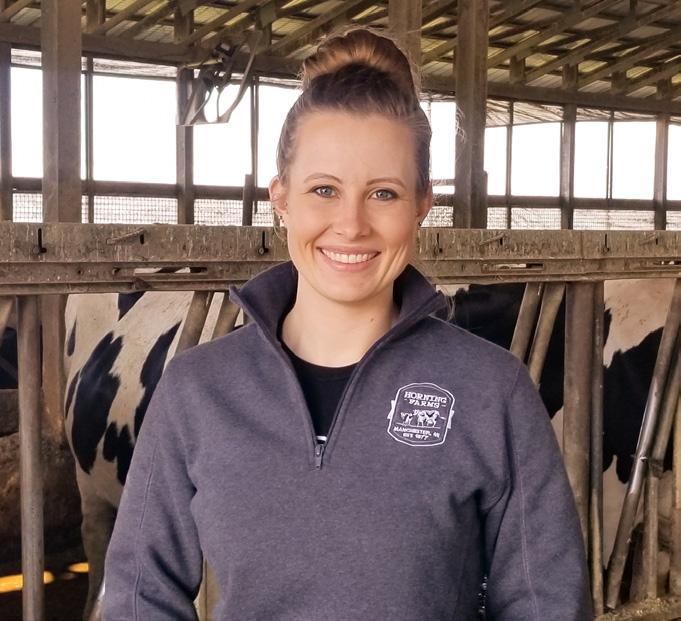
Lorilee milks 60 registered Holsteins and manages over 200 acres at Mil-R-Mor Farm in Orangeville, Illinois. She has been involved in a multitude of leadership and community activities and is passionate about teaching kids about agriculture. She recently interacted with more than 200,000 school children through the Adopt-A-Cow program.
Amber and Ben milk 60 Holstein and Jersey cows, farm 1,500 acres of crops and manage a 250-head cow/calf beef herd in Maquoketa, Iowa. The farm focuses on genetics and breeding, calf care and milk production. The pair both hold degrees in Dairy Science from Iowa State University and met while on a dairy-focused study abroad trip to New Zealand.
Justin and Hannah are dairy farmers in Keymar, Maryland where they milk 280 Holsteins and farm 700 acres at Cedar Knoll Dairy LLC. The pair has been extensively involved in various leadership and community activities including roles with their cooperative, Farm Bureau, the Holstein Association and many more.
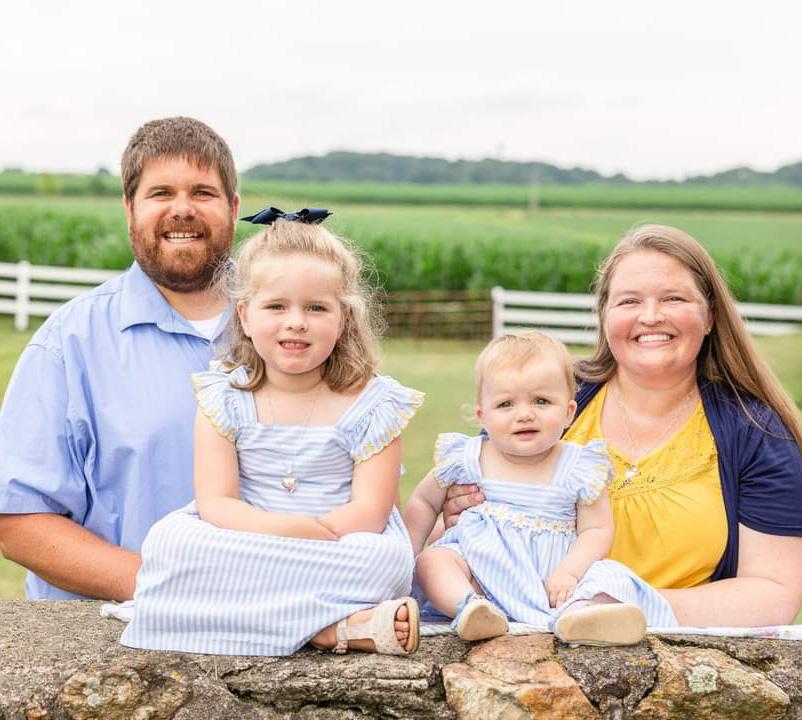
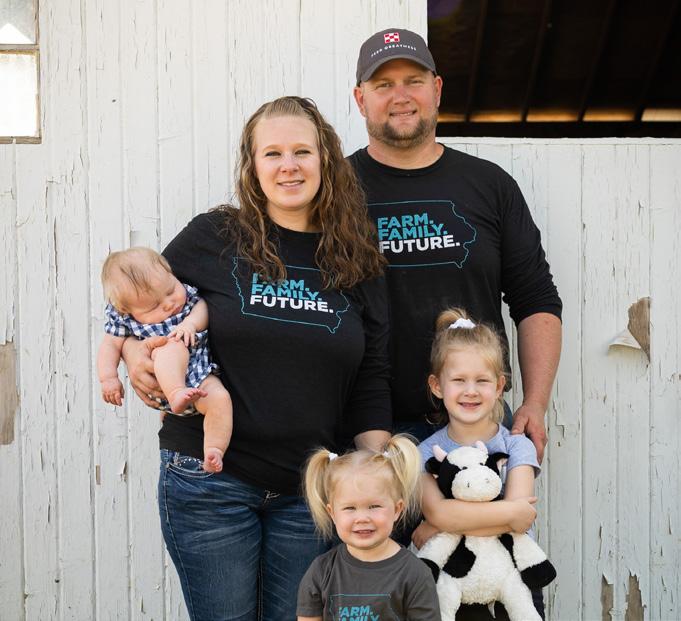






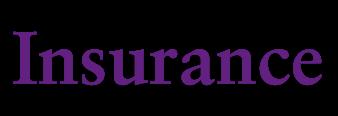











Please select in each pair of attributes the one which is most typical of your personality. No pair is an either-or proposal. Make your choice as spontaneously as possible. There is no wrong answer.
1.I like action.

2.I deal with problems in a systematic way.
3.I believe that teams are more effective than individuals. 4.I enjoy innovation very much.
5.I am more interested in the future than in the past. 6.I enjoy working with people.
7.I like to attend well organized group meetings. 8.Deadlines are important for me.
9.I cannot stand procrastination. 1O. I believe that new ideas have to be tested before being used.
11.I enjoy the stimulation of interaction with others. 12.I am always looking for new possibilities.
13.I want to set up my own objectives. 14.When I start something I go through until the end.
15.I basically try to understand other people's emotions. 16.I do challenge people around me.
17.I look forward to receiving feedback on my performance. 18.I find the step-by-step approach very effective.
19.I think I am good at reading people. 20.I like creative problem-solving.
21.I extrapolate and project all the time. 22.I am sensitive to others' needs.
23.Planning is the key to success. 24.I become impatient with long deliberations.
25.I am cool under pressure. 26.I value experience very much.
27.I listen to people. 28.People say that I am a fast thinker.
29.Cooperation is a key word for me. 30.I use logical methods to test alternatives.
31.I like to handle several projects at the same time. 32.I always question myself.
33.I learn by doing. 34.I believe that my head rules my heart.
35.I can predict how others may react to a certain action. 36.I do not like details.
37.Analysis should always precede action. 38.I am able to assess the climate of a group.
39.I have a tendency to start things and not finish them up. 40.I perceive myself as decisive.
41.I search for challenging tasks. 42.I rely on observation and data.
43.I can express my feelings openly. 44.I like to design new projects.
45.I enjoy reading very much. 46.I perceive myself as a facilitator.
47.I like to focus on one issue at a time. 48.I like to achieve.
49.I enjoy learning about others. 50.I like variety.
51.Facts speak for themselves. 52.I use my imagination as much as possible.
53.I am impatient with long, slow assignments. 54.My mind never stops working.
55.Key decisions have to be made in a cautious way. 56.I strongly believe that people need each other to get work done.
57.I usually make decisions without thinking too much. 58.Emotions create problems.
59.I like to be liked by others. 60.I can put two and two together very quickly.
61.I try out my new ideas on people. 62.I believe in the scientific approach.
63.I like to get things done. 64.Good relationships are essential.
65.I am impulsive. 66.I accept differences in people.
67.Communicating with people is an end in itself. 68.I like to be intellectually stimulated.
69.I like to organize. 70.I usually jump from one task to another.
71.Talking and working with people is a creative act. 72.Self-actualization is a key word for me.
73.I enjoy playing with ideas. 74.I dislike wasting my time.
75.I enjoy doing what I am good at. 76.I learn by interacting with others.
77.I find abstractions interesting and enjoyable. 78.I am patient with details.
79.I like brief, to-the-point statements. 80.I feel confident in myself.
A.Communicating with an action-oriented person:
Focus on the results first (state the conclusion right at the outset). State your best recommendation (do not offer many alternatives). Be as brief as possible. Emphasize the practicality of your ideas. Use visual aids.
B.Communicating with a process-oriented person: 1 2. 3.
Be precise (state the facts).
Organize your presentation in a logical order; background present situation outcome
Break down your recommendations. Include options (consider alternatives) with pros and cons. Do not rush a process-oriented person. Outline your proposal (1, 2, 3, ... ).
C.Communicating with a people-oriented person:
Allow for small talk (Do not start the discussion right away). Stress the relationships between your proposal and the people concerned. Show how the idea worked well in the past. Indicate support from well-respected people. Use an informal writing style.
D.Communicating with an idea-oriented person:
Allow enough time for discussion. Do not get impatient when he or she goes off on tangents. In your opening, try to relate the discussed topic to a broader concept or idea (in other words be conceptual).
Stress the uniqueness of the idea or topic at hand. Emphasize future value or relate the impact of the idea or the future.
If writing to an idea-oriented person, try to stress the key concepts which underlie your proposal or recommendation right at the outset. Start off with an overall statement and work toward the more particular.
Each selected item has to be reported on the four scales reproduced below. In other words, if items 1, 4, 6, have been selected, the same numbers on the four scales should be circled again.
Style 1 = 1-8-9-13-17-24-26-31-33-40-41-48-50-53-57-63-65-70-74-79 =
Style 2 = 2-7-10-14-18-23-25-30-34-37-42-47-51-55-58-62-66-69-75-78 =
Style 3 = 3-6-11-15-19-22-27-29-35-38-43-46-49-56-59-64-67-71-76-80=
Style 4 = 4-5-12-16-20-21-28-32-36-39-44-45-52-54-60-61-68-72-73-77=
Each style line of circled items should be added UP (not the figures but the number of selected items). The maximum is 20 per style and the total for the four styles should be 40.
Style 1 is ACTION oriented communication style.
Style 2 is PROCESS oriented communication style.
Style 3 is PEOPLE oriented communication style.
Style 4 is IDEA oriented communication style.
From: Casse, Pierre Training for the Cross-cultural Mind. SIETAR 1981 .Used by permission from Manitoba Mediation Services Trainers.
| elaine elaine roese com | elaine roese com | Find harmony through understanding

Plan day to day work
Make annual crop/livestock plans
Decide the mix and type of enterprise in the long run
Decide the level of inputs to use Decide the timing of operations
Decide when to sell crop/livestock
Negotiate sales of crop/livestock
Decide when to pay bills
Decide type and make of machinery and equipment
Negotiate purchase of machinery and equipment
Decide when to hire more help
Recruit and select employees
Decide amount and quality of work Supervise employees
Decide work method/way jobs are done
Decide and plan capital projects
Identify sources and negotiate loans and financing
Livestock management
Keeping farm records
One objective of the International Farm Transfer Study was to examine the process of the transfer of skills and knowledge to the next generation. Respondents were given a list of task and skills that are important to farm management. They were asked to identify the extent of transfer that has taken place for a certain skill or task. Respondents were asked to identify numerically on a scale of one through five. A response of one meant that the operator had retained power over that task or skill, and five meant the successor had complete control over that aspect of the farming operation. The tasks included technical, tactical, strategic planning, marketing, supervisory, managerial, and financial aspects of the farm business.
from: Iowa Farmers Business and Transfer Plans, Iowa State University, May 2009, Public

Build relational capital…what do you really want?
Get out of the neutral zone, a place of high stress. What needs to begin?
Understand the power of “WHY”…your intent. You can’t read minds!
What is the one thing you need to talk about at your business but are avoiding?
Understand that your age has certain tasks that if frustrated cause conflict:
Age 20…independence… the decade of making it.
Age 30 success, mastery…exhausted .
Age 40 taking charge…security, ownership, and control.
Age 50 quality of life issues…simplify, competency.
Age 60 legacy, starting over…future income streams, health.
Age 70 mentoring.. meaningful life.
Age 80 elderhood, blessing….deal with death.
Age 90 hand it all over.
Why folks won’t talk about the Undiscussabulls: scared

last great idea was shot down emotional bank account is dry self-worth is based on action or net worth timing is different avoid conflict at all costs
What’s your conflict style? avoidance accommodating competing compromising collaborating
Is the resistance coming from the head, heart or gut?
Understanding, emotion or trust issues?
Action people want directness and results orientation. Process people want options, order, and not to be rushed. People styles want relationship building before business talk. Ideas people want to tell you the big picture without interruption.
Farm families find this Audit Sheet to be helpful in identifying areas in their business that need focus and coaching attention. Use the spaces to the left below to indicate with an 'X' the challenges that your farm family business is currently facing.
A better understanding of how to be fair to family members.
Getting clearer about recognizing the value of contribution and sweat equity to the farm.
Becoming better organized to have both succession life plan & estate death plan in order.
Explaining more effectively why certain decisions/family decisions are made
Recognizing the income stream that we require when the farm transfers.
A better understanding of what is enough to live on.
Dealing more effectively with residence needs.
Hearing more about off-farm income streams
Increasing my expertise in financial planning.
Becoming more aware of what’s risky in changing ownership of the farm.
Defining the actual financial snapshot of the viability of the farm operation.
Becoming more aware of what’s next for me after the farm transfers.
Having more fun in my life.
Building a more workable succession plan.
Better honouring of the timelines we have agreed to.
Decreasing anxiety over the uncertainty of the future.
Avoiding the typical mistakes farmers make in farm transfer planning.
Becoming clearer about who does what in the daily farm operation.
Learn better conflict resolution skills.
Better understand how to clarify my intent
Express my thoughts more effectively
Becoming a better listener
Better understanding of how to build trust
Dealing more effectively with resistance
Learning to deal with difficult feedback
Be better equipped to identify tension triggers
Other
Take responsibility for changing you. Only you change you. Change is inevitable, but growth is optional. Timeliness is key…greater options if time is with you.
2.Come from curiosity
I’m curious about…don’t be judgmental or defensive.
Identify your conflict style and possible triggers. Control anger. Seek common ground and “make a request”.
Clarify, seek information, do reality checking, brainstorm, and move from positions to interest… What is important to you about that?
3.Ask deeply
Balance the speaking and listening…ask open-ended questions. Explain - describing your own feelings and interests. Be soft on the person and hard on the problem…just like toilet paper!
4.Play with possibility
Use a talking stick, have family biz meetings. Avoid the downward spiral…be positive. Don’t pre-judge other’s goals and dreams.
5.Really LISTEN. “When I listen, people talk.”
Build understanding through checking out assumptions Explore interests and feelings Guess what is motivating the other person. Check out thinkingforresults.com
6.Ponder and perk not prod.
Digest, sift, and give yourself space and time to think. Consider the other’s perspective.
Ask “Is there anything else?”
"Is that right?" “What would you like me to do differently?"
7.Cultivate Trust
Build confidence in the relationship. Walk your talk, accountability. Culture of fairness, respect, commitment.
8.Respect boundaries
Clear roles…dad or boss? Family or business role?
Guidelines for performance, jobs.
Be clear about expectations. Confidentiality. Cut gossip.
9.We all end up in a box.
Death will happen, come to terms with life, plan for it!
Face the aging process…sustain emotional & physical health.
Reconsider your future.
10.Extend the olive branch.
Create the legacy of open communication and relationship.
Forgiveness to be able to move forward.
Pass on authority and learn to let go.
Effective family business meetings: REGULAR, on the calendar!
Talking stick and stress squeeze toys. Undiscussabull™ cards..on index cards.
Guidelines for respect. White board agenda collector.
www.elainefroese.com/blog
Check here for recent articles to encourage your family.
Search “farm family coach” on youtube.com to see Elaine’s videos.
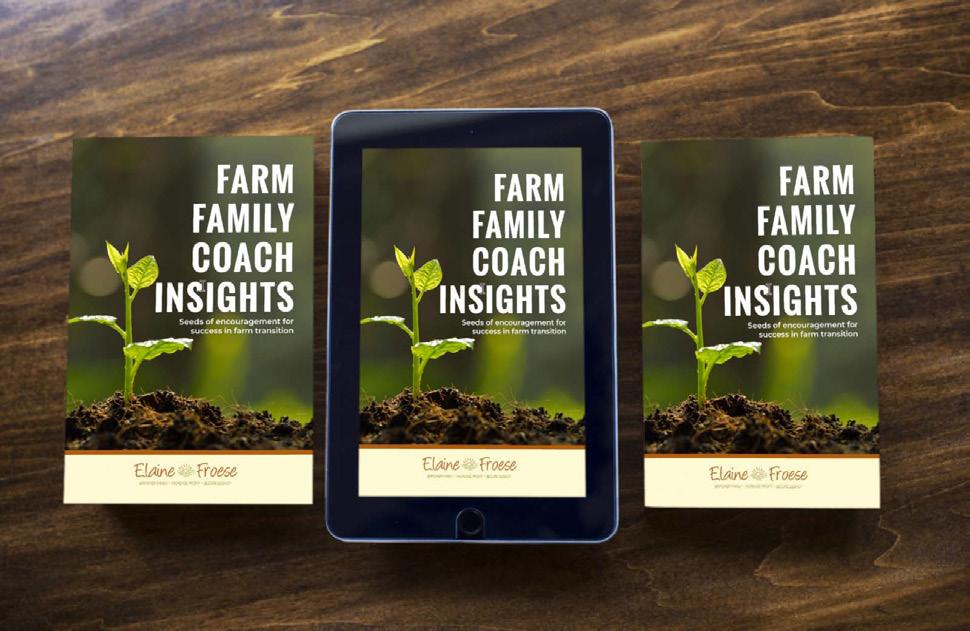
Farm families find this Audit Sheet
be helpful in identifying areas in their business that
focus and coaching attention. Use the spaces to the left below to indicate with an ‘X’
challenges that your farm family business is currently facing.
A better understanding of how to be fair to family members.
Getting clearer about recognizing the value of contribution and sweat equity to the farm.
Becoming better organized to have both succession life plan & estate death plan in order.
Explaining more effectively why certain decisions/family decisions are made.
Recognizing the income stream that we require when the farm transfers.

A better understanding of what is enough to live on.
Dealing more effectively with residence needs.
Hearing more about off-farm income streams.
Increasing my expertise in financial planning.
Becoming more aware of what’s risky in changing ownership of the farm.
Defining the actual financial snapshot of the viability of the farm operation.
Becoming more aware of what’s next for me after the farm transfers.
Having more fun in my life.
Building a more workable succession plan.
Better honouring of the timelines we have agreed to.
Decreasing anxiety over the uncertainty of the future.
Avoiding the typical mistakes farmers make in farm transfer planning.
Becoming clearer about who does what in the daily farm operation.
Learn better conflict resolution skills.
Better understand how to clarify my intent.
Express my thoughts more effectively.
Becoming a better listener.
Better understanding of how to build trust.
Dealing more effectively with resistance.
Learning to deal with difficult feedback.
Be better equipped to identify tension triggers.
Other
Please
Name:
Code:
Marital Status:
Employment:
Stage in Farming Career: (N/A); (Starting Expansion); (Slowing Down); (Retired)
Main desire for coaching is:
Long and Short Term Goals:
Retirement (When? Where? With how much?)
is it re-invention?

Lifestyle Goals...(finances,
Other Goals:
Interest in the Farm Business, expectations about inheritance
Changes considered, actions to take:
How much risk are you prepared to take?
Scan this page back to elaine@elainefroese.com
This profile is for your personal use,
confidential.
Short-term

Keys:
Personal Trusted Advisor:
Mentor:
Accountant:
Family Doctor:
Dentist:
Childcare Provider:
Counselor:
Financial advisor:
List of RRSP's, TFSA and other investments:
Lawyer:
Loaning Institutions/manager:
Insurance agents and policies:
Farm Operations
Processors (ie sales barns manager):
Elevator manager: Commodity broker: Suppliers:
Veterinarian:
Equipment:
Trusted realtor:
Association representative:
Vendor list (Do you have one to send out a blanket email?)
The Fix-It Folks
Mechanic:
Dealerships:
Electrician:
Plumber:
Furnace repairs:
Septic system/well & locations:
Equipment:
Welder: Security systems:
Other stuff (Sleds, Pool, Camper, Snow removal):
Will(s): Where is a copy? Is it up to date? Reviewed in the last 5 years?
Power of attorney:
Executor:
Guardian:
Organ donation:
Cremation:
Funeral arrangements:
Business agreement(s): Where is a copy? Is it up to date?
Lease agreements: Land (deeds):
Quota:

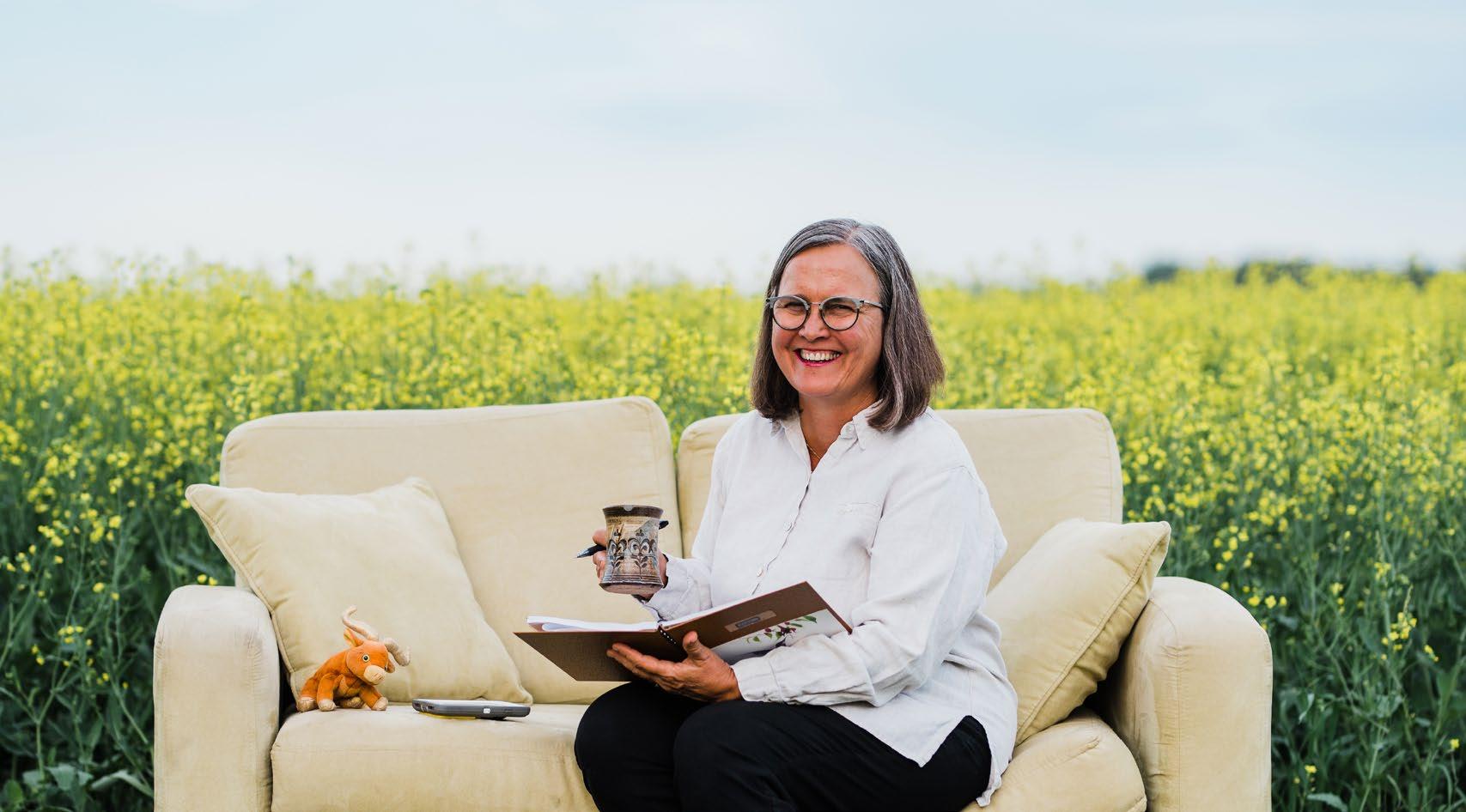

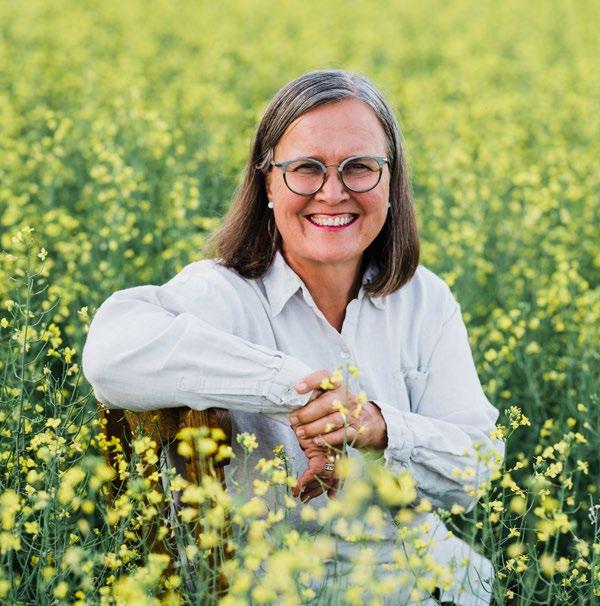


The following lists represent specific job duties, areas of responsibility, and decision-making grouped by occupational specialties. This listing should assist managers in defining what tasks or job functions to delegate or assign to individual job positions on the farm. These detailed lists are followed by six sample job descriptions that encompass all the duties delegated on a farm with crop, livestock and timber operations.
Coordinate annual operating and strategic planning, consolidate cashflow planning efforts and report periodically to the management team on cash flow and overall financial performance.
Organize workforce, assign responsibilities, and coordinate efforts of personnel.
Oversee hiring, training, and orientation of full and part-time help.
Evaluate employees and coordinate personnel self-improvement strategies.
Oversee compensation program and adjustments. Execute contracts.
Manage estate plan implementation (wills preparation, stock sales and payments, etc.).
Negotiate leases, serve as primary liaison with landlords, make annual distributions of landlord crop shares, and maintain records on lease advances and crop shares.
Monitor federal farm program provisions and insure compliance in annual cropping plans, file necessary crop plans, production reports, and landlord distribution information with FSA and other regulatory entities.
Negotiate joint ventures and strategic alliances with other farms and businesses.
Oversee rental houses, advertise vacancies, collect rents, perform maintenance as needed.
Oversee office maintenance, supplies, and equipment servicing & replacement.
Administer records retention and disposition program; dispose of records when holding periods are met.
Maintain corporate minutes, by-laws, and resolutions.
Analyze the feasibility of capital investments and negotiate new purchases. Shop for capital purchase items based on specifications approved by authorizing body.
Develop annual cropping plan including rotational strategy and variety selection.
Prepare annual inputs for cashflow budget preparation concerning crop plan and major expense areas (i.e. chemicals, fertilizer, seed ).
Supervise procurement, storage, cleaning, and treatment of seed.
Coordinate seeding operations and maintain seeding records.
Determine the timing and scope of farm equipment operations for major tillage, cultivation, and harvest operations.
Operate farm machinery in all phases of crop production.
Perform maintenance and overhaul responsibilities of farm machinery and crop-related structures.
Monitor inventory of shop tools, supplies, gas, diesel, and equipment parts maintained on hand; and coordinate restocking as needed.
Monitor crops for weed and insect problems; arrange for and/or apply chemicals for weed and insect control.
Arrange for collection of soil samples for fertilizer program and arrange for fertilizer application consistent with annual cropping plan.
Maintain field records on all production inputs and applications.
Oversee operations of custom seeding, spraying, fertilizing, trucking and harvesting.
Coordinate field crew rock removal activities.
Oversee delivery, dumping, weighing, and load-out operations for grain storage operations. Negotiate grain storage and shipping arrangements with market and storage outlets.
Supervise elevator storage, maintenance, aeration, and fumigation activities.
Monitor grain and livestock markets and market commodities. Develop and execute marketing plans. Track inventory levels and market crops.
Train and oversee the new and part-time employees on proper servicing procedures. Develop and maintain service guidelines for all major farm vehicles and motorized equipment. Perform general service, maintenance, and overhaul of farm machinery.
Oversee maintenance and repair work subcontracted off the farm. Keep service records on equipment maintenance, overhaul, and servicing.
Assist in identifying winter overhaul or maintenance agenda; keep maintenance needs list updated during the year.
Provide direction and technical assistance to other employees performing overhaul duties. Assure that the farm shop is properly stocked to perform normal maintenance and repair activities.
Monitor shop and equipment operating environment for safety and environmental regulations compliance; insure proper disposition of toxic and other waste products.
Pay bills and perform banking responsibilities.
Prepare monthly and annual farm financial reports; distribute to appropriate audiences. Coordinate with the accountant the preparation of individual and corporate tax returns. File periodic payroll, truck road mileage, and gas tax reports.
Arrange loans for operating and capital purposes.
Supervise pension plan investing, serve as plan trustee and prepare required reports. The coordinated annual financial planning process. Prepare cash flow budget projection using input from responsibility center managers and report periodically to officers and managers on cash flow performance.
Prepare quarterly fuel and road tax returns. Prepare interpretive managerial reports including ratio analysis, profit center analyses, etc.
Manage insurance coverage levels (crop, casualty, disability, medical, and life). Keep records concerning claims history.
Coordinate coverage levels on rolling stock for farm vehicles and personal vehicles insured under farm policies; insure liability certificates are maintained in vehicles.
Feed and take of cattle and horses.
Oversee birthing activities (farrowing, calving, foaling).
Arrange for delivery or deliver marketed livestock to market outlets.
Monitor condition of pastures; move livestock to new pastures as needed.
Put out salt, mineral, and face fly bags as needed during pasture grazing seasons.
Monitor stocks of veterinary equipment and supplies feed, supplements, salt, and mineral; restock supplies as directed.
Assist in coordinating branding and replacement heifer number identification processes.
Perform spring and fall vaccinations of mature livestock and new production.
Conduct or assist vets in pregnancy, semen, and trich-testing activities.
Monitor breeding stock conditions (bulls, replacement heifers, and brood cows); make recommendations for purchasing replacements and selling culls.
Monitor herd health in pastures and feedlots; make treatments where feasible or arrange for vet services as needed.
Perform routine maintenance on barns, corrals, fences, and salt and hay feeders.
Assist in stocking, sharpening, and treatment of posts and poles.
Participate in hay harvest; deliver surplus hay for sale.
Oversee care of horses, and insure shoeing needs are met.
Keep barns clean and remove excess manure from feedlots and feed ways.
Monitor condition of springs and troughs; develop or improve water sources as needed.
Oversee pasture weed spraying program.
Develop work plans and make repairs to fences, corrals, and livestock improvements.
Maintain and operate haying equipment.
Assist in other general farm work activities as directed.
Prepare timber management plans.
Negotiate timber sales and supervise custom logging operations.
Oversee timber harvest, slash clean-up, and reclamation activities, including grass seeding and tree re-replanting.
Interact with NRCS and other conservation organizations for conservation programs.
Oversee farm compliance with environmental regulations.
Oversee the design and implementation of structures and practices to improve environmental stewardship of the farm.
Plan, develop, inspect and maintain field drainage systems and sediment ponds.
Coordinate planning of overall workload.
Organize workforce, assign responsibilities, and coordinate efforts of personnel.
Arrange for additional personnel when necessary.
Execute contracts.
Pay bills and perform banking responsibilities.
Negotiate leases; serve as primary liaison with landlords; make annual distributions of landlord crop shares, and maintain records on lease advances and crop shares.
Monitor federal farm program provisions and insure compliance in annual cropping plans; file necessary crop plans, production reports, and landlord distribution information with ASCS and BIA.
Analyze the feasibility of capital investments and negotiate new purchases.
Monitor grain and livestock markets and market commodities.
Maintain farm financial records.
Coordinate with an accountant on the preparation of individual and corporate income tax returns.
File periodic payroll reports and gas tax refund requests.
Manage insurance program coverage for crop, casualty, medical, and company-funded life purposes.
Arrange loans for operating and capital purposes.
Supervise investments for a pension plan, serve as plan trustee and prepare periodic reports required by law.
Manage estate plan implementation (wills preparation, stock sales, and payments, etc.)
Coordinate annual financial planning (cashflow preparation) and report periodically to other officers on cashflow performance.
Maintain corporate minutes, by-laws, and resolutions.
Supervise employee activities related to cattle operation; feed and monitor calving activities at Home Place.
Supervise timber harvest, clean-up, and re-seeding.
Train and oversee new and part-time employees on proper servicing procedures. Develop and maintain service guidelines for all major farm vehicles and motorized equipment. Perform general service, maintenance, and overhaul of farm machinery.
Oversee maintenance and repair work subcontracted off the farm. Keep service records on equipment maintenance, overhaul, and servicing. Assist in identifying winter overhaul or maintenance agenda; keep maintenance list updated during the year.
Provide direction and technical assistance to other employees performing overhaul duties. Assure that the farm shop is properly stocked to perform normal maintenance and repair activities.
Monitor shop and equipment operating environment for safety and environmental regulations compliance; insure proper disposition of toxic and other waste products.
Operate farm equipment as needed. Oversee off-loading and hauling out operations at grain storage site.
Propose an annual cropping plan in cooperation with other officers. Prepare annual inputs for cashflow budget preparation concerning crop plan and major expense areas (i.e chemicals, fertilizer, seed, and repairs).
Supervise procurement, storage, cleaning, and treatment of seed for grain operations. Coordinate drilling operations and maintain seeding records.
Operate farm equipment for major tillage, cultivation, and harvest operations. Determine periodic needs for various tillage, cultivation, and harvest of crops. Perform maintenance and overhaul responsibilities of farm machinery and structures. Monitor inventory of shop tools, supplies, gas, diesel, and equipment parts maintained on hand; and coordinate restocking as needed.
Serve as liaison with SCS for soil conservation activities. Monitor crops for weed and insect problems; arrange for and/or apply chemicals for weed and insect control.
Arrange for collection of soil samples for fertilizer program and arrange for fertilizer application consistent with annual cropping plan.
Maintain field records on all production inputs and applications.
Assist in cattle operations where needed.
Assist in setting up an annual crop insurance plan.
Feed cattle during winter months.
Serve as trustee for pension plan.
Operate Mack truck and perform the maintenance required to keep in good working order.
Operate farm machinery during planting, fertilization, chemical application, tillage, spraying, and harvest operations.
Perform maintenance duties on farm equipment and improvements.
Keep maintenance records up to date as activities are completed.
Assist in the treatment of seed, fumigation, and clean-up of the elevator.
Make recommendations on fence repairs needed; assist in repairs.
Assist in feeding cattle as a backup at the shop and other locations.
Assist in monitoring crops for weed and insect problems.
Assist in haying operation as needed.
Coordinate field crew efforts for rock removal.
Prepare quarterly fuel and road tax returns.
Perform other general farm work activities as directed.
Prepare annual cashflow budget planning input related to livestock operations.
Feed and take of cattle and horses and oversee calving activities. Deliver marketed livestock to market outlets.
Monitor condition of pastures; rotate livestock to new pastures as needed.
Put out salt, mineral, and face fly bags during pasture grazing and wintering seasons.
Monitor stocks of feed, supplements, salt, and mineral; restock supplies as directed.
Assist in coordinating branding and replacement heifer number identification processes.
Perform spring and fall vaccinations and assist vets in pregnancy, semen, and trichinosis testing activities.
Monitor breeding stock conditions (bulls, replacement heifers, and brood cows); make recommendations for purchasing replacements and selling culls.
Monitor herd health in pastures and feedlots; make treatments where feasible or arrange for vet services as needed; and, insure that essential veterinary equipment and supplies are on hand
Perform routine maintenance on barns, corrals, fences, and salt and hay feeders.
Assist in stocking, sharpening, and treatment of posts and poles. Make recommendations for improvements needed to fences and other cattle improvements; assist in major fence repairs.
Participate in hay harvest; deliver surplus hay for sale.
Assist in timber harvest, slash clean-up, thinning, and re-seeding operations; perform selective brush clearing.
Oversee care of horses, and insure shoeing needs are met.
Keep barns clean and remove excess manure from feedlots and feed ways. Monitor condition of springs and troughs; develop or improve water sources as directed.
Operate farm machinery and assist in other areas of farm and ranch operation when available around cattle duties.
Operate swather during harvest season for select crops (i.e. grass seed, lentils, canola).
Primary Responsibilities--offer advise and provide assistance in the following areas:
Fencing: priorities, development of work lists, locating fence post supplies.
Cattle Marketing: timing and selection of stock to sell (i.e. bulls, cull cows, feeder's calves).
Pasture utilization: number of head to the place, desired season of use; dates to move.
Branding: identifying heifers to be shoulder branded for potential replacements.
Replacement Heifer selection: what breed combinations are needed to maintain breeding herd mix.
Bulls: when to cull and replace; recommended sources for purchasing replacements.
Breeding Season: when to turn bulls out; which bulls to match with cowherds.
Cowherd: location placement-which cows to place in each breeding or wintering location.
Winter feeding program: feeding recommendations, numbers to feed at each location.
Feed: tonnage needed, the desired mix in the ration, delivery time desired.
Herd Health: recommendations for timing and nature of vaccinations needed; face fly bags, etc.
Cattle Records: maintain updated lists of calving records; cow records on historical calving. performance; bull management data; replacement heifer data; and other data relevant to management of cattle operation.
Position: Chief Financial Officer (CFO)/Management Information DirectorPay bills and perform banking responsibilities.
Prepare monthly and annual key financial reports and distribute relevant reports to board, management, and responsibility center managers.
Prepare cash flow budget projection using input from responsibility center managers and report periodically to officers and managers on cash flow performance.
Analyze the feasibility of capital investments with a focus on optimizing procurement strategy. Maintain and update farm Management Information System including historical operating and financial data, trend comparisons, and ratio analysis in key performance areas. Coordinate with an accountant on the preparation of individual and corporate income tax returns.
File periodic payroll reports and fuel tax refund requests.
Arrange loans for operating and capital purposes. Make annual distributions of landlord crop shares, and maintain records on lease advances and crop shares.
(Optional) Monitor grain and livestock markets, keep updated records of current inventory positions and future production to be marketed; market commodities.
(Optional) Maintain corporate minutes, by-laws, and resolutions.
(Optional) Manage insurance program coverage for the crop, casualty, medical, and companyfunded life purposes; maintain the history of claims experience, loss to premium ratios.
(Optional) Monitor federal farm program provisions and insure compliance in annual cropping plans; file necessary crop plans, production reports, and landlord distribution information with FSA, NRCS, other entities.
(Optional) Supervise investments for a pension plan, serve as plan trustee and prepare periodic reports required by law.
(Optional) Manage estate plan implementation (wills, stock buyouts, payments, etc.)
(Optional) Serve as Technology Coordinator for the farm; keep computer hardware and software updated; perform regular backups and maintain information security systems.
(Optional) Oversee office maintenance, supplies, and equipment servicing & replacement.

(Optional) Administer records retention and disposition program; dispose of records when holding periods are met.
(Optional) Shop for capital purchase items based on specifications approved by authorizing body.
Midwest Farm Wives 2022 #63 https://player.fm/series/midwest-farm-wives/ep-63-preparing-for-thefuture
Farm4profit: June 6, 2022 Episode 183 and 184 https://intro-tofarm4profit.simplecast.com/episodes/hayes-familytransition-plan-w-elaine-froese

Are you a Gen 2 Successor? Do you feel like your farm succession/transition plan is stuck in neutral? Maybe your parents refuse to discuss the subject, leaving you frustrated, resentful, and fearful for your future? If so, this episode is right for you. First off, it doesn’t need to be this way. Secondly, you don’t have to travel this path alone. I’m here to help get the next generation unstuck. Tracey Brunet of Impact Farm Marketing is passionate about successful succession planning. You can listen to my pointers for generation 1 and generation 2 here:
Episode #98 Gen 2: https://www.farmmarketer.com/Resources/ResourceItem?resourceItemId=220
Episode #97 Gen 1: https://www.farmmarketer.com/Resources/ResourceItem?resourceItemId=219
Episode #41 Culture Beats Strategy: https://www.youtube.com/watch?v=F 2SrdLUKxA&feature=youtu.be
Episode #15 Fair and Equal: https://www.farmmarketer.com/impact-farming-show-elaine-froese-fairand-equal
Working Cows Podcast: Episode 192 Elaine Froese, and Episode 216: https://workingcows.net/? s=Elaine+Froese
Ag State of Mind podcast: Episode 124 and 125 https://globalagnetwork.com/agstate-of-mind-with-jason-medows/podcast
I’ve also been podcasting with the University of Wisconsin to encourage farmers. Check out their RURAL Realities podcast: https://datcp.buzzsprout.com/1160120
Finding Fairness in Farm Transition: https://datcp.buzzsprout.com/1160120/5032997-findingfairness-in-farm-transition?play=true
Discuss the Undiscussabull: https://datcp.buzzsprout.com/1160120/4546769-discussing-theundiscussabull?play=true
Farming’s In-law Factor: https://www.youtube.com/watch?v=aXqMfaldVFw
Not sure you should be watching YouTube while you drive large equipment, but give a listen to a presentation on Sparking Conversations: https://youtu.be/SwWaYxyeQ_4
And a BIG THANKS to all of you who subscribe to my YouTube channel, Elaine Froese Farm Family Coach. The Finding Fairness in Farm Transition video is a great coaching tool to listen to before you meet as a family.
Here’s the link: https://www.youtube.com/watch?v=dVgmMQC95rc

DATE: PURPOSE: FACILITATOR: NOTE-TAKER: ATTENDEES:
REGRETS (ABSENT):
DATE OF NEXT MEETING: TIME OF NEXT MEETING:
ROLES FOR NEXT MEETING: FACILITATOR: MEETING EVALUATION:

NOTE-TAKER:
AGENDA ITEM
PRIME PERSON DUE DATE



A common challenge that we encounter in succession planning is the concept of sweat equity, and the opinions vary as widely as the definition of it. Recently one old codger that we began working with put his opinion very bluntly, he summarized it as follows. "Boys if you can’t prod it or poke it, ride it or smoke it, it ain’t real and you can’t use it!" On the other hand, we have worked in situations where the parents want to give a multi-million dollar farm to one child because they have worked on the farm since graduating. We thought we would take the opportunity to share with you some common rationales that we have seen farm families use to justify fairness to other siblings in completing their succession plan.

Ned Needshalp found himself in a pickle when his hired man of 15 years, Steady Teddy, retired. Ned operates a sizeable grain farm that has very high seasonal labour requirements. Ned is 55 years old and was faced with the decision to downsize, quit or begin training new help. His son Fred expressed an interest in the farm but was concerned with the capital requirement and risk associated with purchasing the entire operation. They reached an agreement in which Fred would work on the farm for a salary they agreed upon of $50,000 per year $30,000 of which Fred uses to live upon and $20,000 which remains invested in the farm with a 7.5% return. This investment is kept track of and if Fred decides to take over the farm someday this will form part of his down payment.
S. Jobbs has held a number of prominent executive positions in the corporate world, he has climbed the corporate ladder two rungs at a time, however, he felt torn between continuing his prominent corporate career and returning to the family farm. After much soul searching, Mr. Jobbs decided to give the farm a chance. His parents, in an effort to encourage and support his decision, felt that a fair approach to the situation was to offer him the same executive salary he was making in the corporate world. His drawings from the farm were only a ¼ of the salary, however it was expected that he pay fair market value for the farm. Similar to the previous example, the difference between the salary and the drawings would remain invested in the farm.
Ed Jimcated ran a successful farm his entire life on a grade 9 education and was successful doing it. He placed no value on formal education. In an effort to keep his son, Ed Junior, on the farm and avoid the cost of sending him for post-secondary education he offered his son the value of the education in equity on the farm. Ed had 2 other children which he sent to the big city for some schooling and it cost him $15,000 in room, board, tuition, and books in addition he figured $25,000 per year was missed if the children had been working full time. He offered Ed Junior $40,000 per year for 5 years a total of $200,000 with a 7.5% return if he would stay home and work with him on the farm for 5 years. At the end of the five years, this sweat equity could be rolled into ownership on the farm or he could take his money and run!
Kary Kepitgoin is a fourth-generation farmer and can’t imagine selling the farm on his watch! He wanted someone in the family to take over the operation and was willing to give it all away to see the operation continue on. There was one problem, his wife wanted some sense of fairness to the children who decided not to farm. Their son enjoyed the farm work however had very realistic expectations of profit on the operation and because they were at established jobs his wife was not willing to take the risk without some certainty that they would own the necessary assets for a sustainable farm in the future. Kary and his wife agreed that they would sell the farm in the future at a reasonable price that would easily cash flow and the difference between this price and market value would be called sweat equity. This was discussed with the other siblings and everyone was in agreement.
In summary, the four situations demonstrate four different examples of calculating sweat equity. The decision to use or not to use sweat equity is very individual. However, if you are going to use sweat equity it is important to pre-determine its value. Where we have seen major problems is in situations where an open discussion has not taken place and there are vastly different expectations of sweat equity value and terms within the same business team.
By Andrew Deruyck and Mark Sloane Nov, 2011
One snowy day at a beautiful ranch home in southern Alberta, around the expansive kitchen table, the farm team said: “Elaine, you should make a list of your top phrases that you use in coaching.” “Okay,” I said, knowing that many of the best projects are started by attentive practical ranchers and farmers who call it like they see it.
It is your farm. Your family. Your choice.
This is my essential message as a coach. I want farm folks to build new scenarios for the new chapters in their lives that suit their values and goals. Many folks who feel “stuck” have not stopped to talk with themselves about what they really want in their life, their family, and their farm business.
Are you sensing a new chapter coming up in your life? What choices do you have to make some new experiences happen?
So why are you putting up with bad behavior? Folks, you do not have to allow abuse, profanity, or nasty behavior on your farm. Stand up for what you believe is right. Find support beyond your farm gate.
That was then, an this is now.
(Attributed to my mother-in-law, Margaret Froese). Meaning that things change and you might need to make a new decision for the present and the future. Some founders make promises to successors that have to be broken when the financial reality dictates that the founders need more money for their reinvention years. Plans can change, but the basic trust doesn’t need to be harmed if the parties can all be honest, transparent, and agree to talk about their disappointment.
A farm is not a piece of pie.
This means the critical mass of assets needs to stay with the farm owner or shareholders. Create another wealth bubble for your non-business heirs or have great agreements that allow access to the land for the farm operation. Parents are not responsible for ensuring that all of their adult
children are economically equal. Many adult children have wealth creation goals that don’t demand large gifts from hard-working founders. Perhaps if you sat down with your children you’d discover that their main desire is for you to have some rewards now to be able to enjoy the fruit of your labour.
Change is inevitable growth is optional.
Change is going to happen, but are you ready to embrace it and work through the necessary steps to achieve your goals in a timely fashion and meet the needs of your team? The Hudson Institute gave me a great map called the “cycle of renewal” that helps families navigate change and make minitransitions to get aligned again with their vision and goals. Life is not a straight line, and we are more resilient to the bumps in the road when we take a “learner” approach.
You are
good enough.
This is a take on Brene Brown’s work where she says “You are enough.”
Many young farmers feel that no matter how hard they work it is never “good enough.” All of our farms could use more intentional affirmation. Lately, I have been asked to speak about “encouraging the heart of your farm.” We all need more affirmation and appreciation on our farm teams.
Divorce on farms does not have to happen.
This saying provoked a profane outburst at one of my seminars, but I meant it. Love and respect for all players and spouses on your farm will go a long way to avoiding the divorce courts. Sometimes I think people don’t ask for professional help soon enough, and then the pain and wounds are far too deep to be healed.
When is it her turn to get what she needs?
This is the uncomfortable question posed to the aging founder who has been married for over 45 years and still cannot see what his wife is longing for in a new chapter of life beyond the farm. She wants to move away from the main yard (Grand Central Station) and spend more time with her hobbies and friends in town. She is tired. She knows her husband still wants a role on the farm, but now it needs to be different as the next generation becomes the main manager.
A conversation is not a contract.
My friend Jolene Brown likely coined this term first, and she is right. Many promises as conversations will not hold up when challenged. Families in business are wise to write things down in agreements that keep a record of what was decided and promised.
Love does not read minds.
I think I was told this as a young bride by our minister, and I used this phrase recently in a coaching call. It was powerful when I saw the young farmer’s binder page with the quote in BOLD block letters. He is planning to make it into a wooden plaque for his kitchen.
A young frustrated farm woman asked me in a seminar Q&A what to do with a father-in-law who was not treating her with respect. I quickly said, “Just leave.” She did not leave, but the notion that she did have the option to choose a different path gave her the freedom to make her current situation different. She now blogs about agriculture, and we had the pleasure of reuniting a few months ago. I had no idea of the power of the phrase until she told me her story. You can find out more about “necessary endings” in our book Farming’s In-law Factor. Chapter ten talks about what to do when things don’t work out.
Conflict resolution is a business risk management strategy. Discuss the Undiscussabull.
I believe that conflict avoidance is one of the huge boulders holding agriculture back. Many founders have a fear of conflict, so they procrastinate and do not have courageous conversations. Attack an issue without attacking the person, and get a resolution. Don’t waste emotional energy on “drama”. Learn to focus on solving problems with effective, focused management.
Elaine Froese, CAFA, certified coach, is the author of four books dedicated to helping farm families and has coached over 600 farm families and helped many others with her online programs and resources. She parents 2 millennials, one who is her successor. Visit www.elainefroese.com to learn more about her services and products and to see more great articles and tools to assist your farm family.

| elaine elainefroese.com | .elainefroese.com | Find harmony through understanding













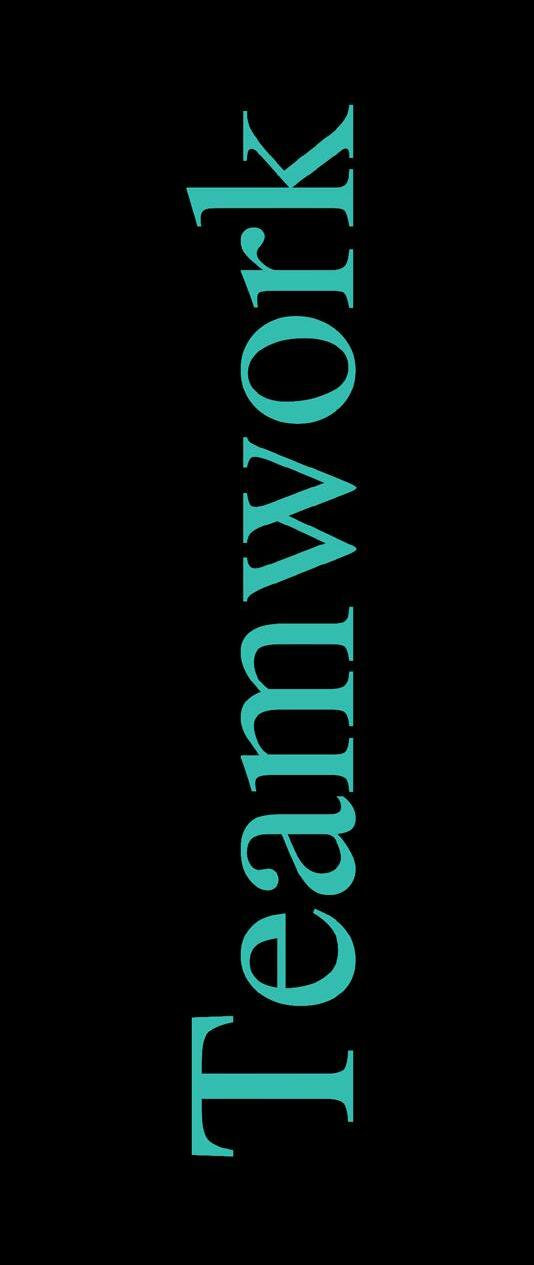













Discuss your core values and principles and how they impact who you are, and what you want for the future.
What are the core values and principles of your family farm?
Why does your farm exist, what is the purpose of the farm?
What energizes you about your business?
Why are you there ? Why do you continue to operate a farm business?

What is your common interest going forward:
...Where would you like the farm to be in...
…5 years?
…10 years?
…15 years?
What do you see as the main focus of your farm business?
Create a brief statement that ties together all of the above thoughts to summarize what is really important to your family and farm. Where are you going with the farm?

Sometimes in the process of pushing for what we want, we forget to figure out what exactly we do want. Instead of pushing hard and fast, spend some time thinking about what you can “live with” and can you live with the worst-case scenario. Answer the questions below to help you prepare your next well timed discussion!
What I know.
What I need to know.
Who can help answer it?
What I want.
What I don’t want.
What do we agree on. What I could “live with”.
What is the worst that could happen if...?
How can I prevent it from going
What is the best that could happen if...?
be done to minimize the impact
it does go wrong?

Email us with accessibility issues regarding United States Department of Agriculturethis report.

CLS - 0722 August 3, 2022
Class II Price was $26.66 per hundredweight for the month of July 2022. The price per hundredweight increased $0.01 from the previous month. Class III Price was $22.52 per hundredweight for the month of July 2022. The price per hundredweight decreased $1.81 from the previous month. Class IV Price was $25.79 per hundredweight for the month of July 2022. The price per hundredweight decreased $0.04 from the previous month.
Announcement of Class and Component Prices for July 2022
Class II Price:
Class II Butterfat Price: Class II Skim Milk Price ¹:
Class III Price:
Class III Skim Milk Price:
Class IV Price:
Class IV Skim Milk Price: Butterfat Price: Nonfat Solids Price: Protein Price: Other Solids Price:
Somatic Cell Adjustment Rate:
Product Price Averages: Butter
Nonfat Dry Milk Cheese
40-Pound Blocks
500-Pound Barrels ² Dry Whey
$26.66 $3.3670 $15.42 $22.52 $11.15
$25.79 $14.54
$3.3600 $1.6160 $2.9116 $0.3596 0.00110
(per hundredweight) (per pound)
(per hundredweight) (per hundredweight) (per hundredweight) (per hundredweight) (per hundredweight) (per pound)
(per pound) (per pound) (per pound)
(per 1,000 somatic cell count)
$2.9461 $1.8001 $2.2019 $2.1622 $2.2054 $0.5482
(per pound) (per pound) (per pound) (per pound) (per pound) (per pound)
Email us with accessibility issues regarding this report.

ADV - 0722
23, 2022
Base Class I Price was $25.87 per hundredweight for the month of July 2022. The price per hundredweight was unchanged from the previous month.
Base Skim Milk Price for Class I was $14.64 per hundredweight for the month of July 2022. The price per hundredweight decreased $1.02 from the previous month.
Base Class I Price:
Base Skim Milk Price for Class I:
Advanced Class III Skim Milk Pricing Factor:
Advanced Class IV Skim Milk Pricing Factor:
Advanced Butterfat Pricing Factor:
Class II Skim Milk Price: Class II Nonfat Solids Price:
Two-week Product Price Averages: Butter
Nonfat Dry Milk Cheese
40-Pound Blocks
500-Pound Barrels ¹
Dry Whey
Special information for Appalachian and Southeast: Diesel Fuel Price
Mileage Rate Factor
¹ Adjusted to 38-percent moisture
$25.87 $14.64
$13.07 $14.72
$3.3543
$15.42 $1.7133
$2.9414 $1.8202
$2.3502
$2.3254
$2.3485
$0.6182
$5.455 $0.00550
(per hundredweight) (per hundredweight) (per hundredweight) (per hundredweight) (per pound) (per hundredweight) (per pound) (per pound) (per pound) (per pound) (per pound) (per pound) (per pound) (per gallon) (per hundredweight per mile)
United States
Department of Agriculture
Agricultural Marketing Service Dairy Program

Tel.: (913) 495-9300 --- Fax: (913) 888-9207
Mailing Address: email: market.administrator@fmmacentral.com website: www.fmmacentral.com
PO Box 14650 Shawnee Mission, KS 66285-4650
Percent Pounds
Class II Class I
Class III
Class IV
Total Producer Milk
11.94 56.37 6.79 24.90 159,652,441 753,663,340 90,784,227 332,935,084 $27.87 26.66 22.52 25.79
Minimum Class PriceProducer Milk 1,337,035,092100.00
Computation of Uniform Price (per cwt @ Jackson County, MO)
Producer Price Differential
Class III Price
Statistical Uniform Price
Statistical Uniform Price
(@ 3.5% Butterfat) (@ 3.5% Butterfat) (@ Average Pool Component Tests)
Class I
Nonfat Solids ButterfatClass II
Component Prices
$1.79 Butterfat Price
Other Solids Price Protein Price$22.52 $24.31 $25.87 1.6160 0.3596 2.9116 $3.3600 /lb /lb /lb /lb
Nonfat Solids Price
Other Solids Protein Class III
Class IV
Butterfat Butterfat
Nonfat Solids
Total Classified Value
Overage - All ClassesAdd:
Inventory Reclassification - All Classes Other Source Receipts
Product Pounds Price per cwt / lb Component Value Total Value
Location Adjustment to Handlers Butterfat Skim Milk 325,351,499 7,583,585 9,337,229 7,495,943 30,267,894 23,558,433 43,687,211 4,307,034 14,323,428
$16.64 3.3743
3.3670 1.7133 3.3600 2.9116 0.3596 3.3600 1.6160
$54,138,489.43 25,589,290.87
Total Pool Value
$80,253,056.44
31,438,450.06 12,842,799.15 101,700,123.84 68,592,733.49 14,471,634.24 23,146,659.63
15,709,921.07
186,002,778.40
Less: 525,276.14 44,281,249.21 37,618,293.87
$348,155,377.92
3,715.50 (14,690.04) 95,799 5,163.57
Less: (121,016,708.79) (27,854,631.47)
Value of Producer Somatic Cell
1,640,847.20Somatic Cell Adjustment - Classes II, III and IV
$349,790,414.15
Value of Producer Butterfat 51,495,742 3.3600 2.911641,563,645 (173,025,693.12) 0.359677,460,043 Value of Producer Protein Value of Producer Other Solids (323,921,630.55)
0.00110 212
SCC Adj Rate (1,000 cells) (2,024,597.17)
Location Adjustment to ProducersAdd: One-half Unobligated Balance - Producer Settlement Fund Producer Settlement Fund - ReserveLess:
Total Pool Milk (w/URSP) & PPD Value 1,337,130,891
Producer Price Differential Statistical Uniform Price
$24.31 $1.79
(Selected pool and price statistics on next page)
Todd
$25,868,783.60
(2,127,045.36) 774,390.69
Total PPD Value before Adjustments (581,486.00)
$23,934,642.93
for more details, see the next page.
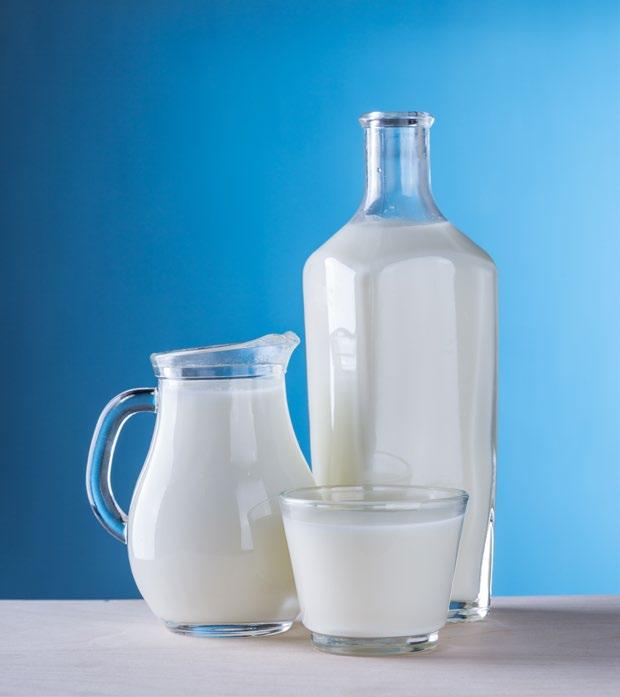
Monthly advanced commodity prices and the Base Class I Price are announced on or before the 23rd day of the preceding month and use the most recent two weeks of price data available at that time. Monthly final prices are announced on or before the 5th of the following month and use the most recent four or five weeks of price data since the last publication of Class and Component Prices.
Class prices are announced as dollars per hundredweight. CWT= hundredweight, 100 pounds.
To calculate the Base Class I Skim Milk Price, both the Class III and IV Advanced Skim Milk Pricing Factors must be calculated. These calculations are identical to those used to compute the Class III and IV Skim Milk Prices announced on or before the 5th of the following month, except for the time series of data used. The average of the Advanced Class III and IV Skim Milk Pricing Factors, plus $0.74, determines the Advanced Base Class I Skim Milk Price.
$0.1715 = Manufacturing cost to produce 1 pound of butter, excluding cost of raw milk ($/lb).
1.211 = Factor representing pounds of butter that can be made from 1 pound of butterfat (lb butter/lb butterfat).
To calculate the Advanced Butterfat Pricing Factor, use the Butter Price from the Advanced Prices and Pricing Factors series released on or before the 23rd of the preceding month. This price series uses the most recent two weeks of price data available at that time.
0.965 = 96.5 pounds of skim in 100 pounds of milk (cwt skim/cwt milk).

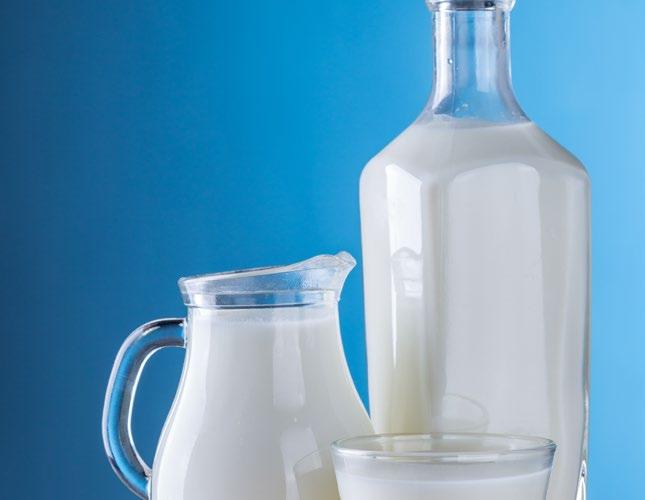
3.5 = 3.5 pounds of butterfat in 100 pounds of milk (lb butterfat/cwt milk).
For more information on the Price Formulas, visit www.ams.usda.gov/resources/price-formulas
For more information on Advanced Prices & Pricing Factors and Class & Component Prices, visit www.ams.usda.gov/rules-regulations/mmr/dmr
Agricultural Marketing Service, October 2019.
USDA is an equal opportunity employer, provider and lender.
more details,
the next page.

Monthly advanced commodity prices and the Base Class I Price are announced on or before the 23rd day of the preceding month and use the most recent two weeks of price data available at that time. Monthly final prices are announced on or before the 5th day of the following month and use the most recent four or five weeks of price data since the last publication of Class and Component Prices. Class prices are announced as dollars per hundredweight. CWT= hundredweight, 100 pounds.
$0.70 = Class II skim milk differential ($/cwt).

$0.007 = Class II butterfat differential ($/lb).
0.965 = 96.5 pounds of skim in 100 pounds of milk (cwt skim/cwt milk). 3.5 = 3.5 pounds of butterfat in 100 pounds of milk (lb butterfat/cwt milk).
For more information on the Price Formulas, visit www.ams.usda.gov/resources/price-formulas
For more information on Advanced Prices & Pricing Factors and Class & Component Prices, visit www.ams.usda.gov/rules-regulations/mmr/dmr
Agricultural Marketing Service, October 2019. USDA is an equal opportunity employer, provider and lender.


Monthly commodity prices are announced on or before the 5th day of the following month.
Class prices are announced as dollars per hundredweight. CWT= hundredweight, 100 pounds.
$0.1991 = Manufacturing cost to produce 1 pound of dry whey, excluding cost of raw milk ($/lb).
1.03 = Factor representing pounds of dry whey that can be made from 1 pound of other solids (lb dry whey/lb other solids).
$0.1715 = Manufacturing cost to produce 1 pound of butter, excluding cost of raw milk ($/lb).
1.211 = Factor representing pounds of butter that can be made from 1 pound of butterfat (lb butter/lb butterfat).
1.17 = Assuming standard cwt of milk components (3.5 lb butterfat and 2.99 lb protein), 1.17 pounds of butterfat are associated with 1 pound of protein.
$0.2003 = Manufacturing cost to produce 1 pound of cheese, excluding cost of raw milk ($/lb).
1.383 = Factor representing pounds of cheese that can be made from 1 pound of protein (lb cheese/lb protein).
1.572 = Factor representing pounds of cheese that can be made from 1 pound of butterfat (lb cheese/lb butterfat).
0.9 = Factor accounting for the butterfat retained in the cheese manufacturing process (90 lb butterfat in cheese/cwt of butterfat used). Accounts for the fat lost in the whey stream.

3.1 = Pounds of protein in 100 pounds of skim milk (lb protein/cwt skim).
5.9 = Pounds of other solids in 100 pounds of skim milk (lb other solids/cwt skim).
0.965 = 96.5 pounds of skim in 100 pounds of milk (cwt skim/cwt milk).
3.5 = Pounds of other solids in 100 pounds of skim milk (lb butterfat/cwt milk).
For more information on the Price Formulas, visit www.ams.usda.gov/resources/price-formulas
For more information on Advanced Prices & Pricing Factors and Class & Component Prices, visit www.ams.usda.gov/rules-regulations/mmr/dmr
Agricultural Marketing Service, October 2019. USDA is an equal opportunity employer, provider and lender.
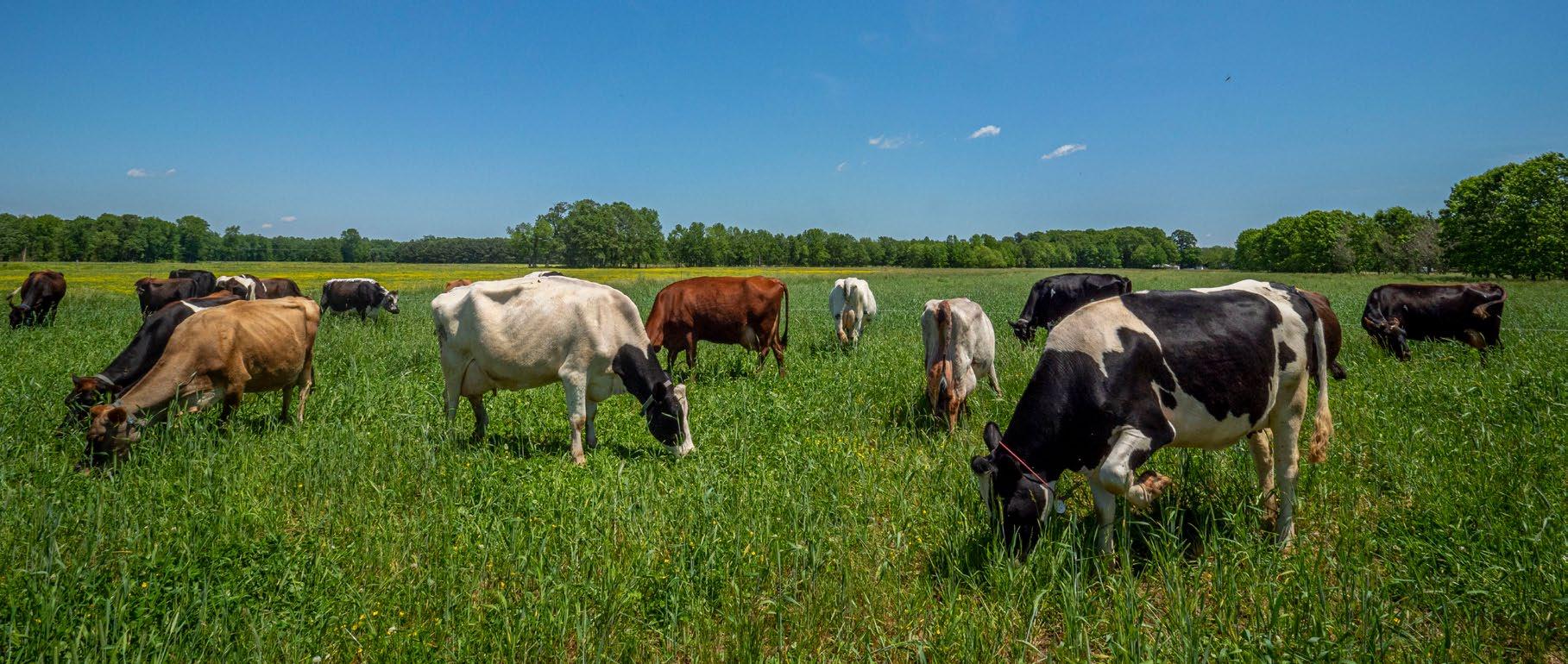
for more details, see the next page.

Monthly
$0.1715
$0.1678
the following
excluding cost of raw milk ($/lb).
pound of butterfat (lb butter/lb butterfat).
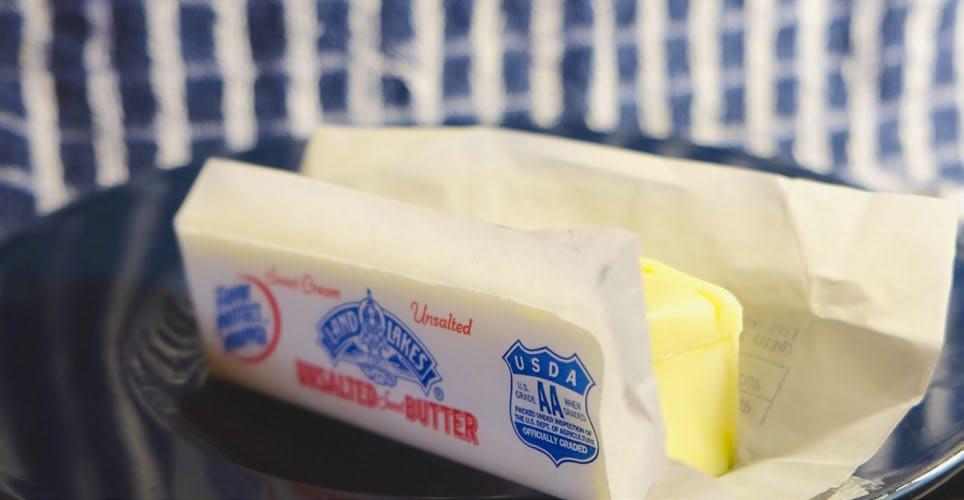
excluding cost of raw milk ($/lb).

0.965
Factor representing
of NFDM
can be made from 1 pound of nonfat solids (lb NFDM/lb nonfat solids).
Factor representing pounds of nonfat solids found in a standard 100 pounds of skim milk (lb nonfat solids/cwt skim).
96.5 pounds of skim
3.5 pounds of butterfat
pounds of milk
pounds
skim/cwt milk).
Marketing Service,
milk
butterfat/cwt milk).
& Component Prices,
